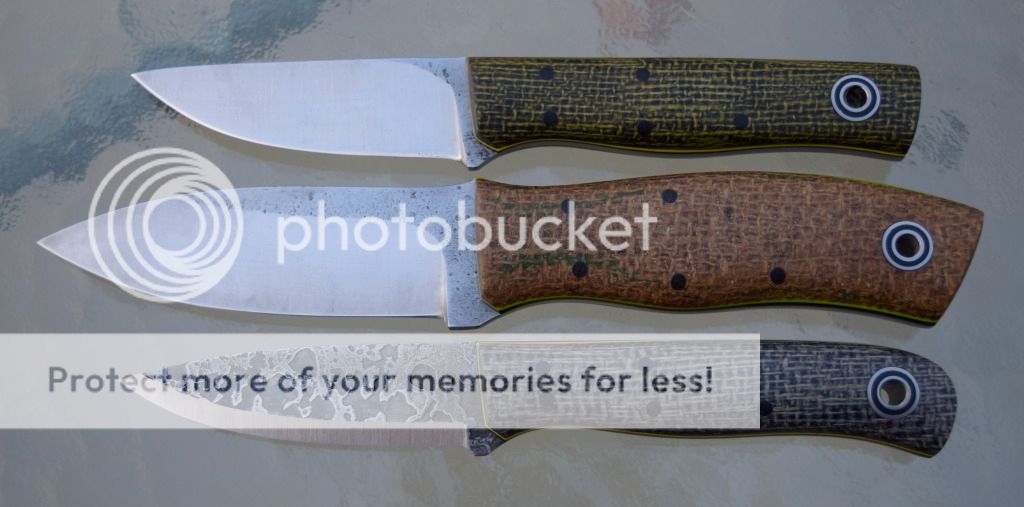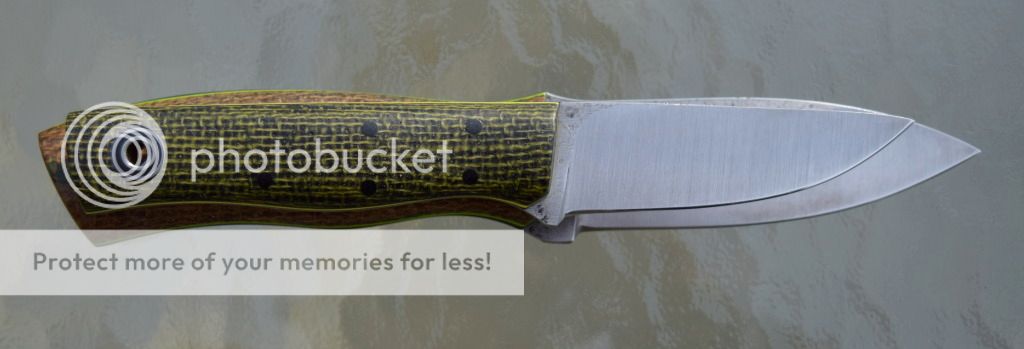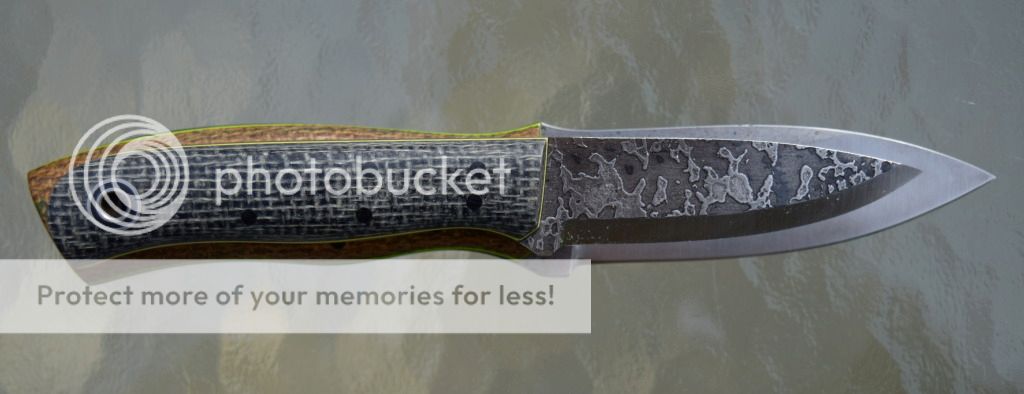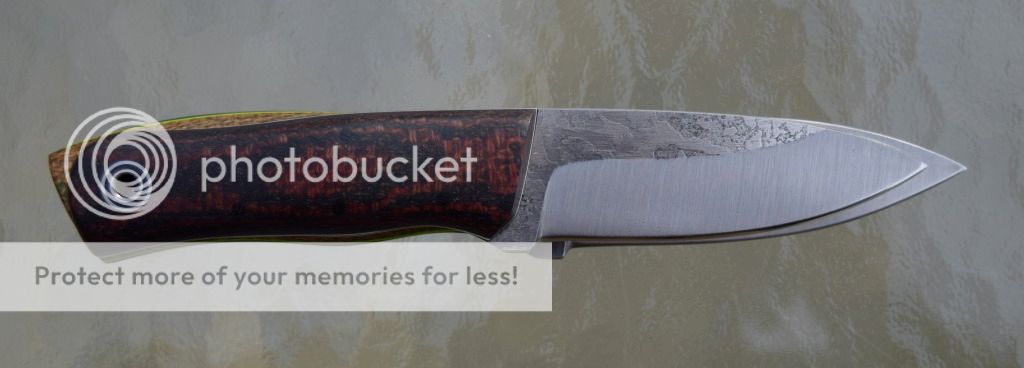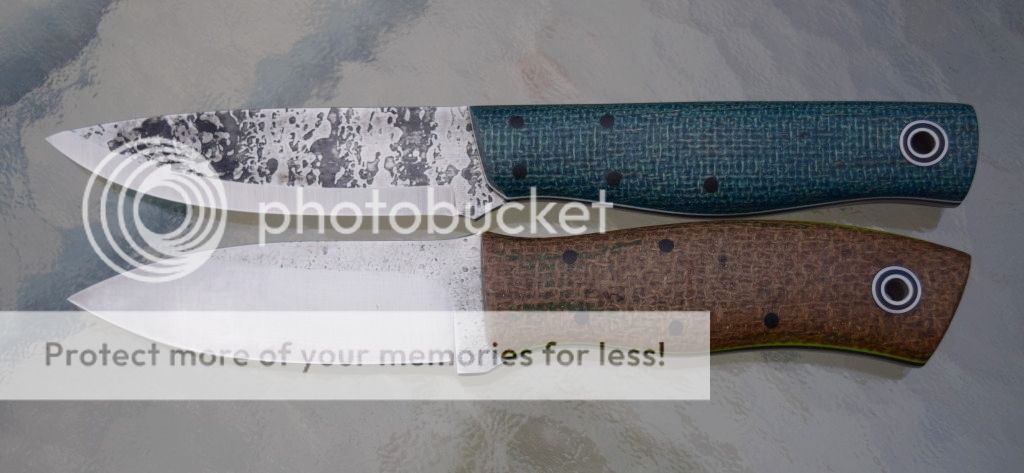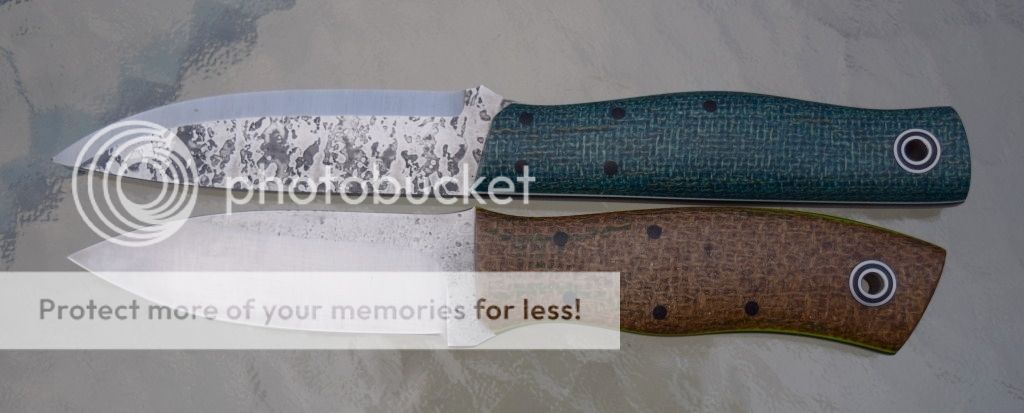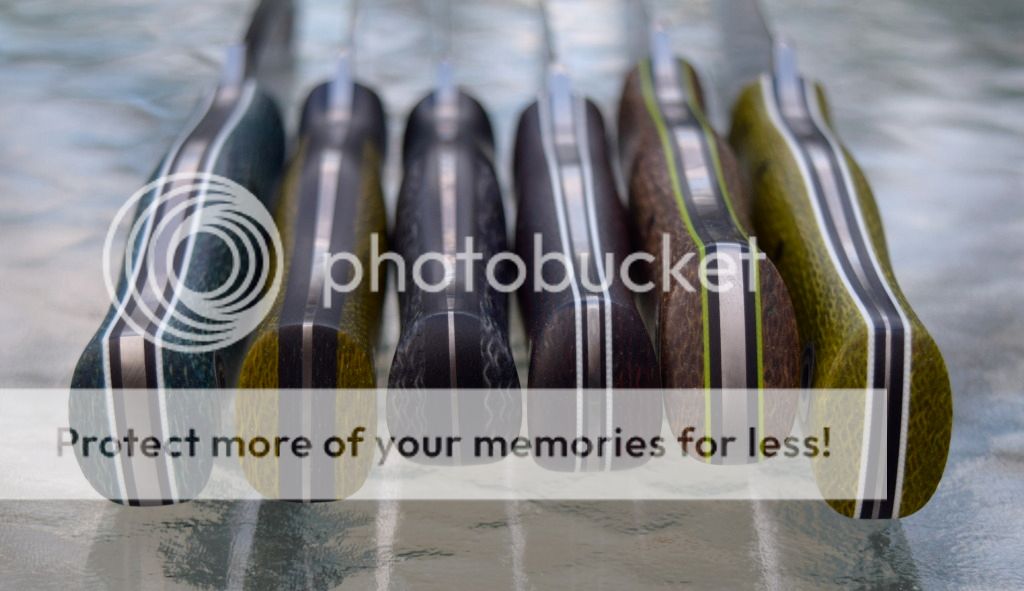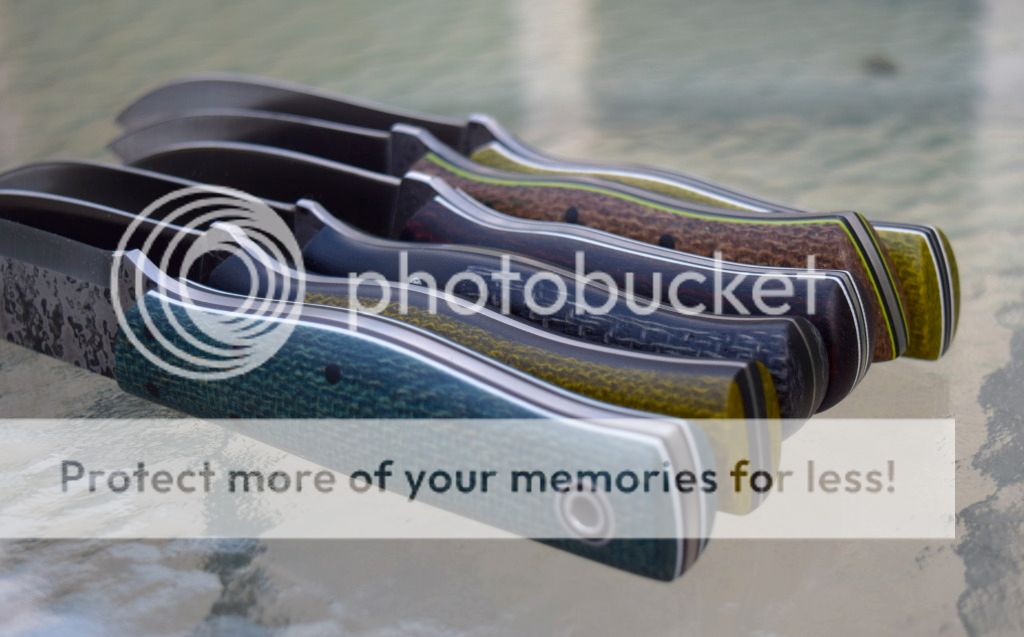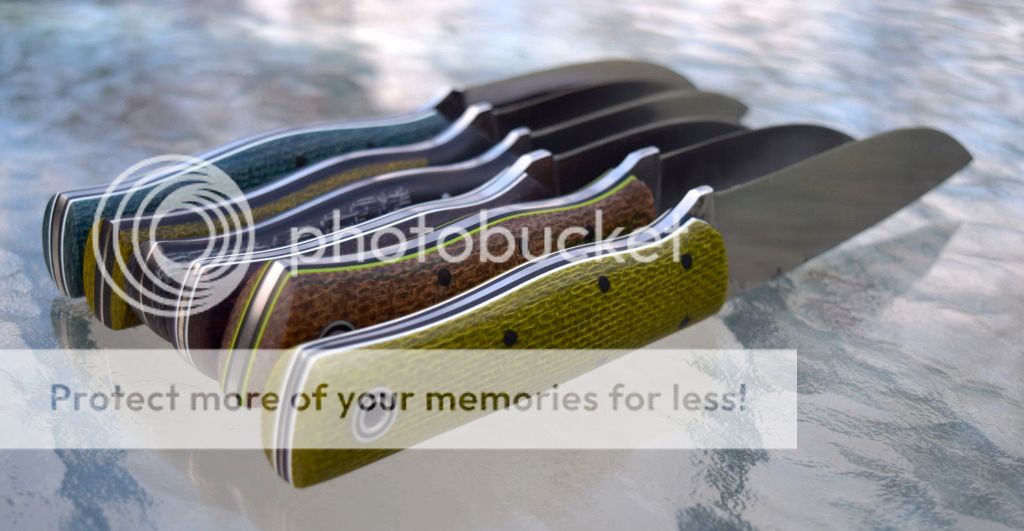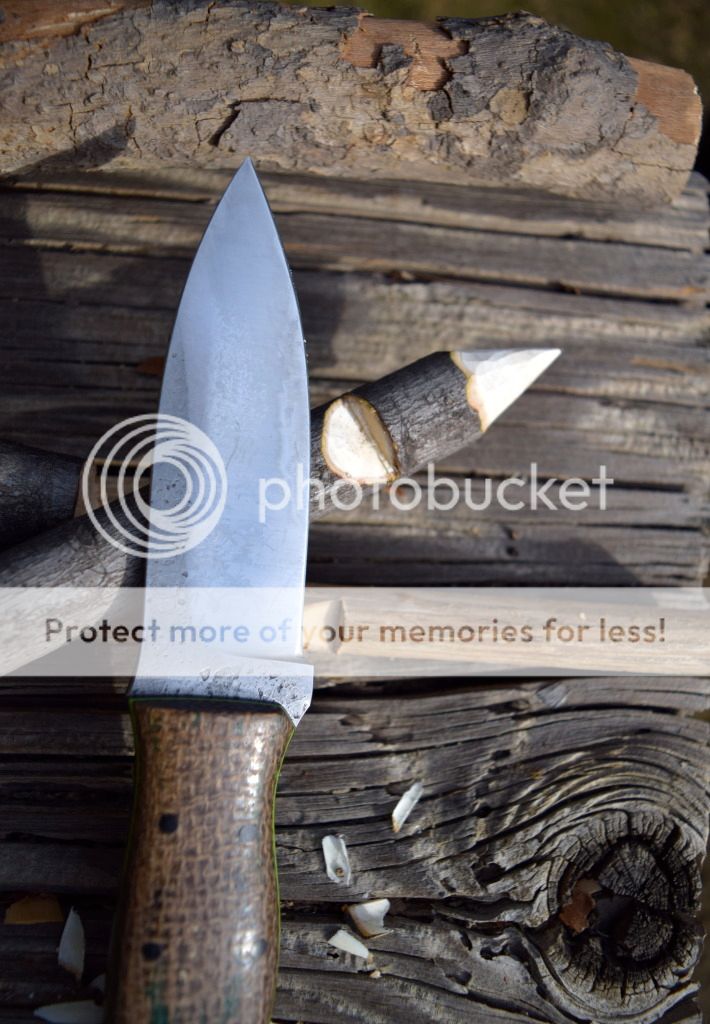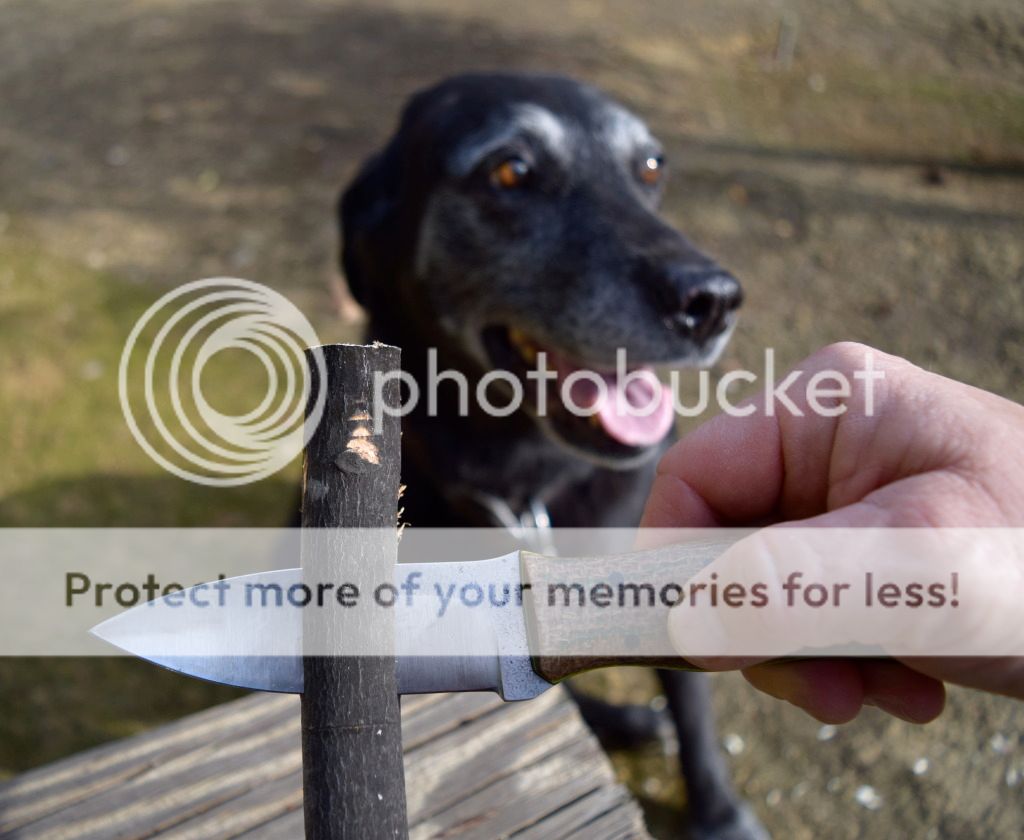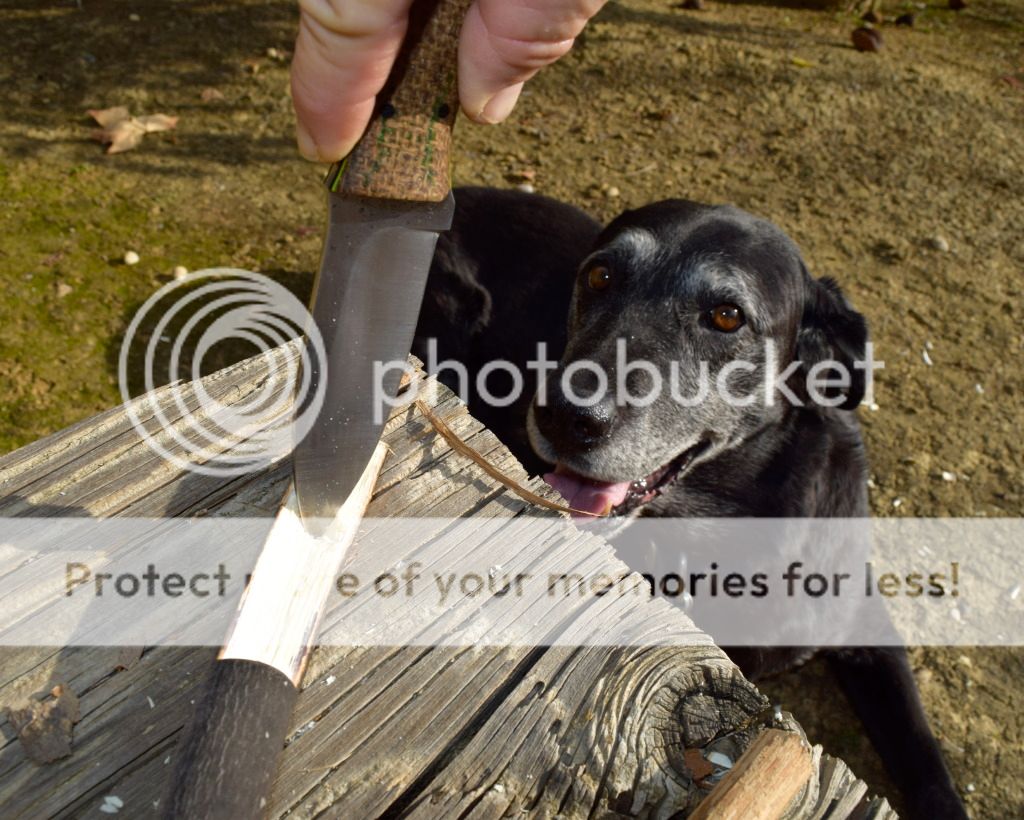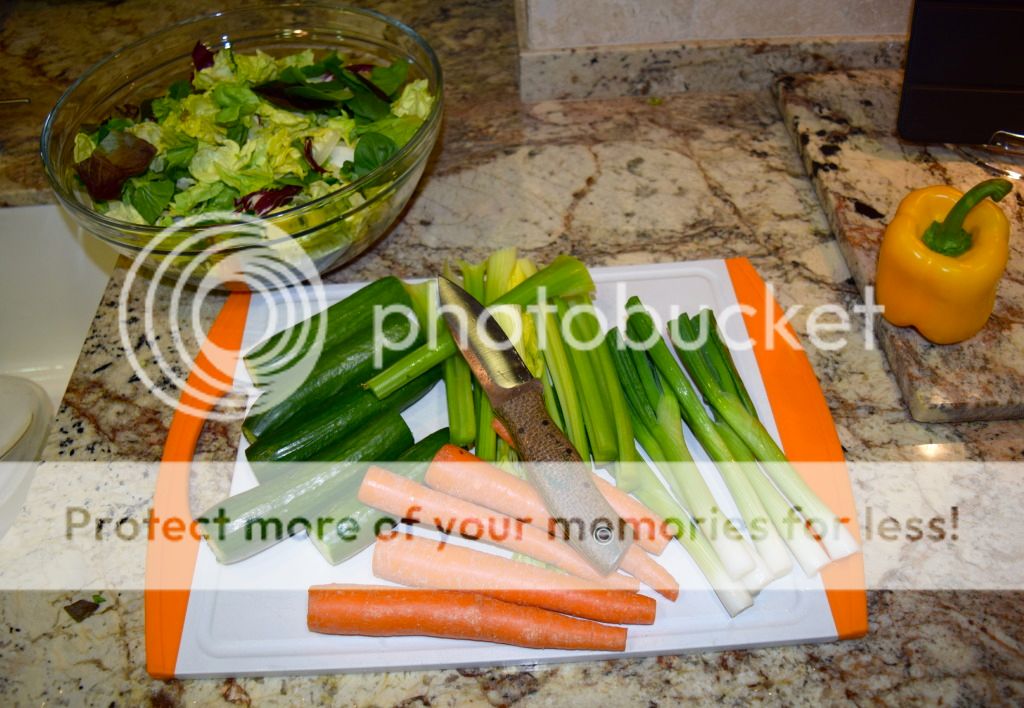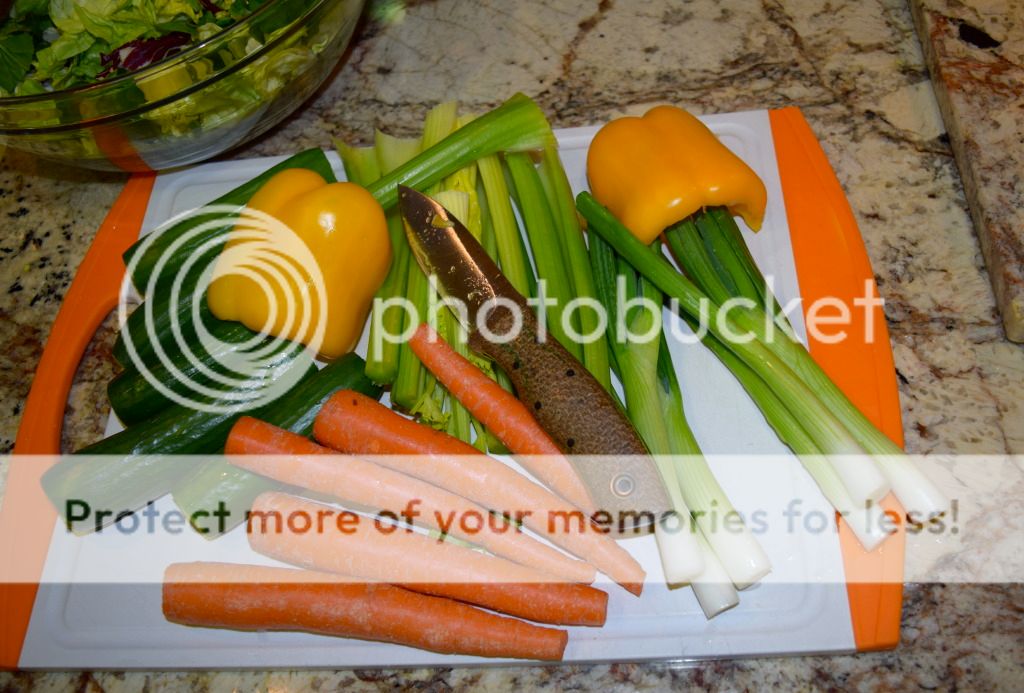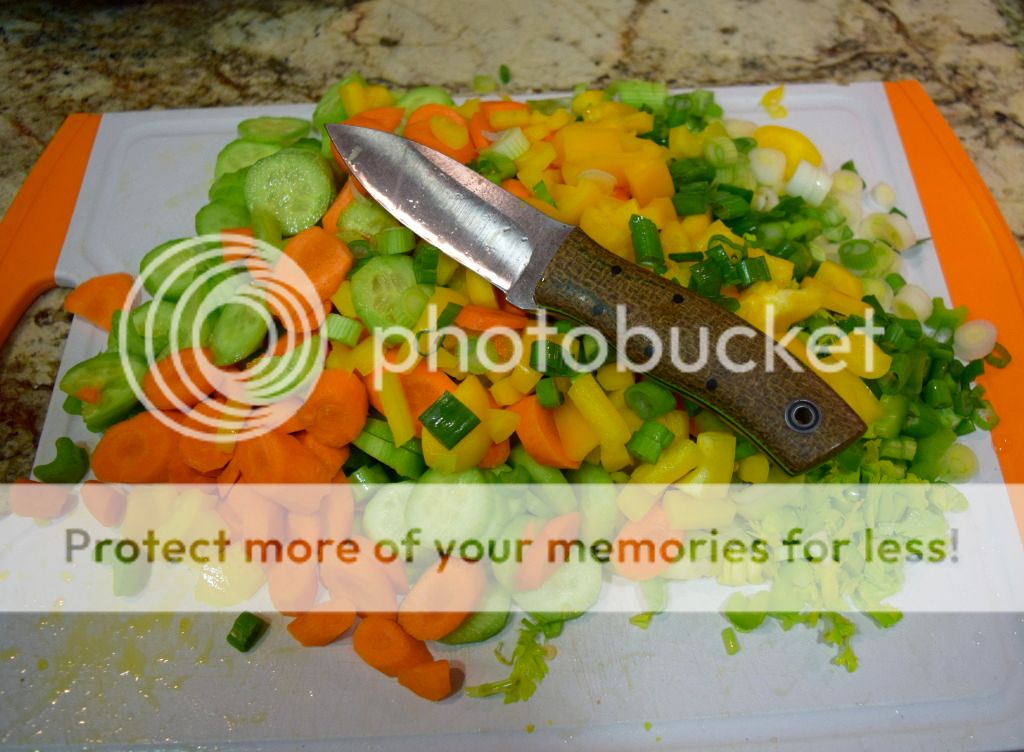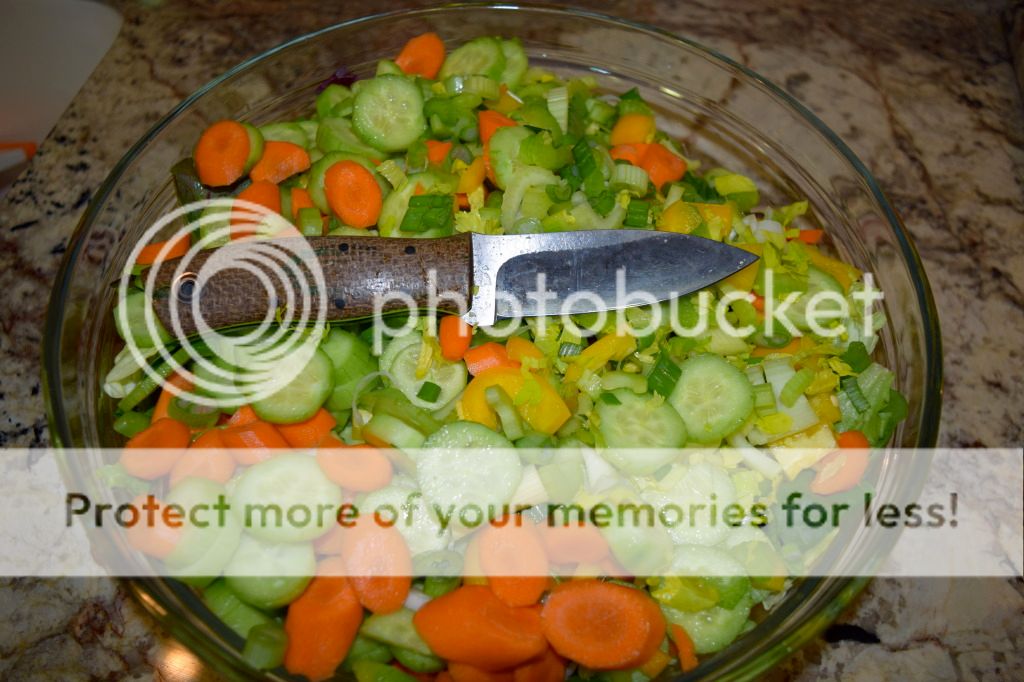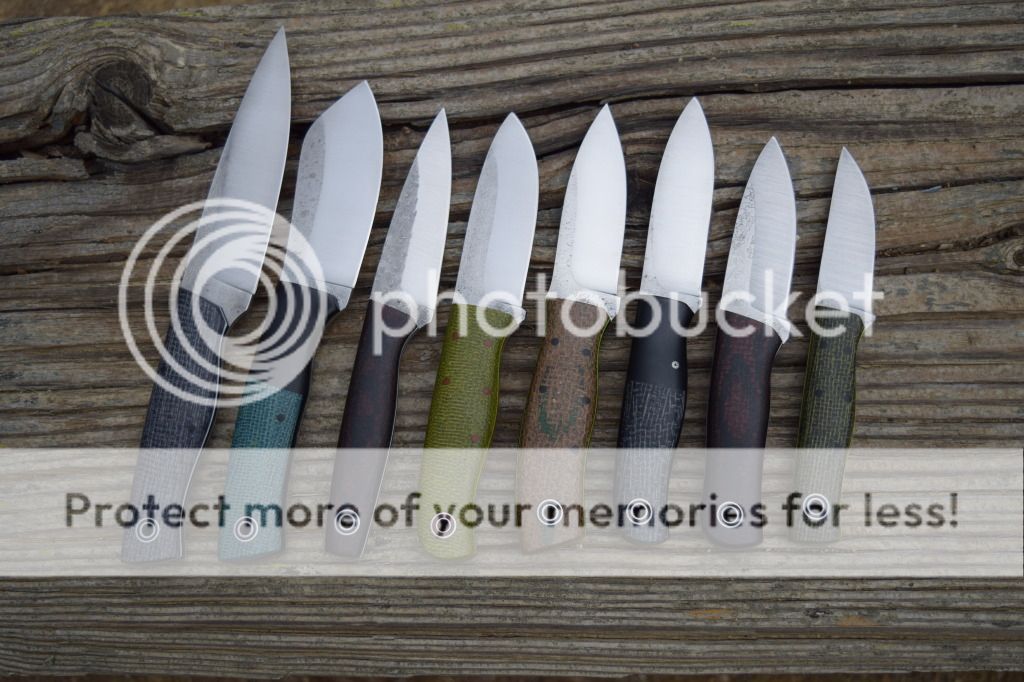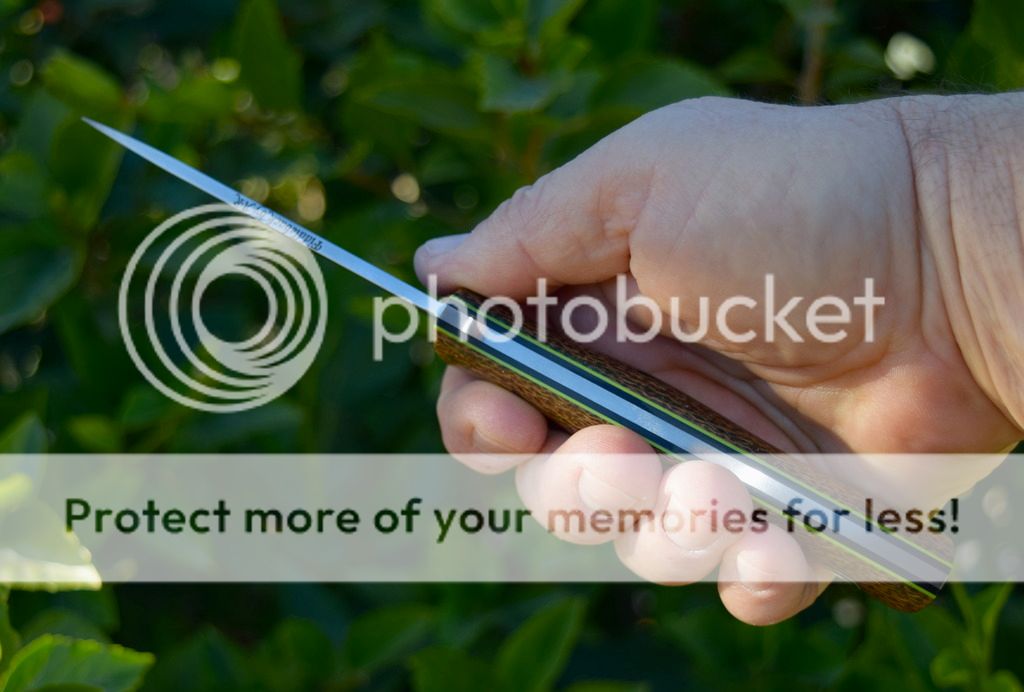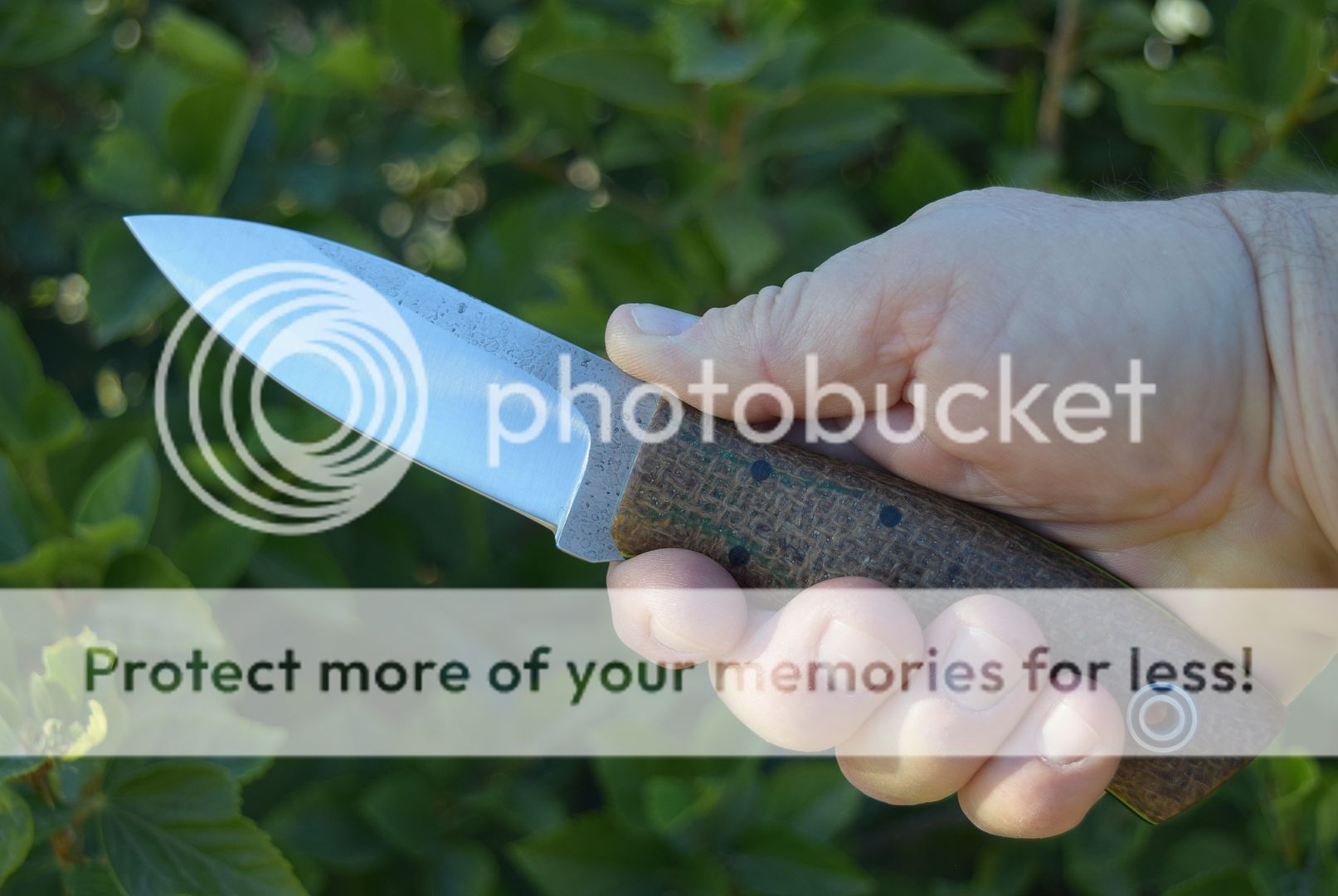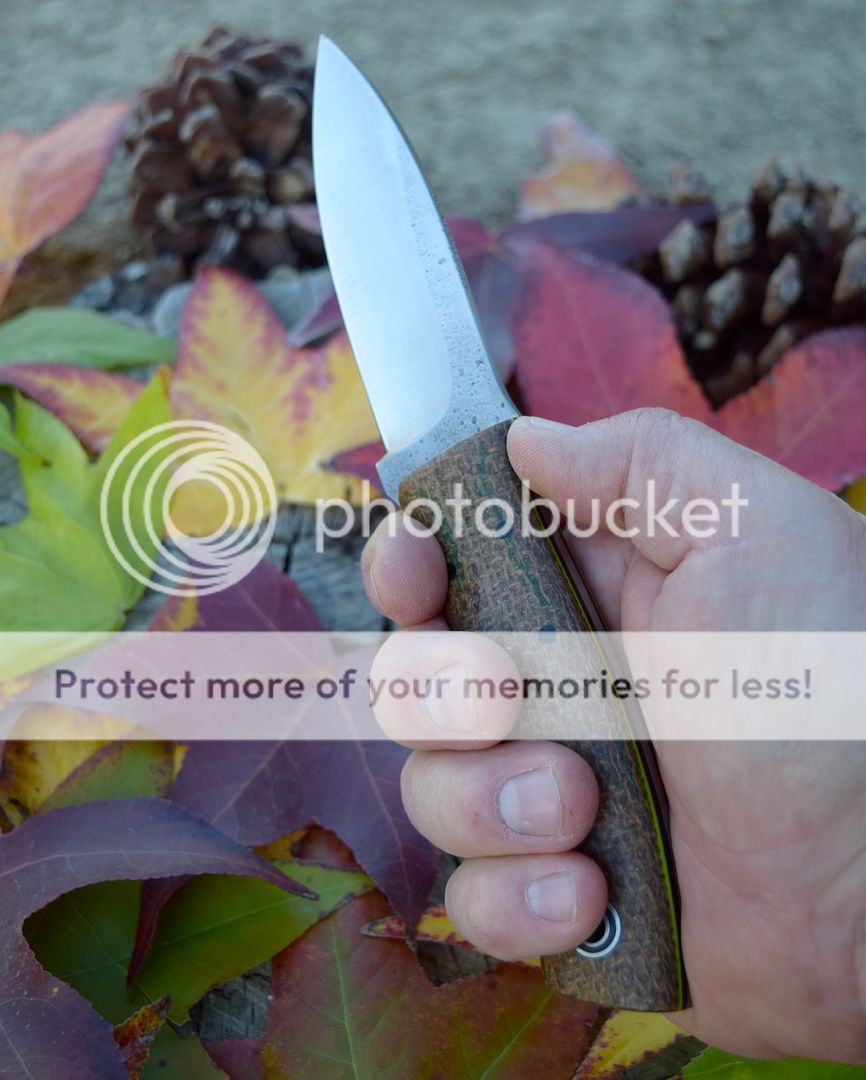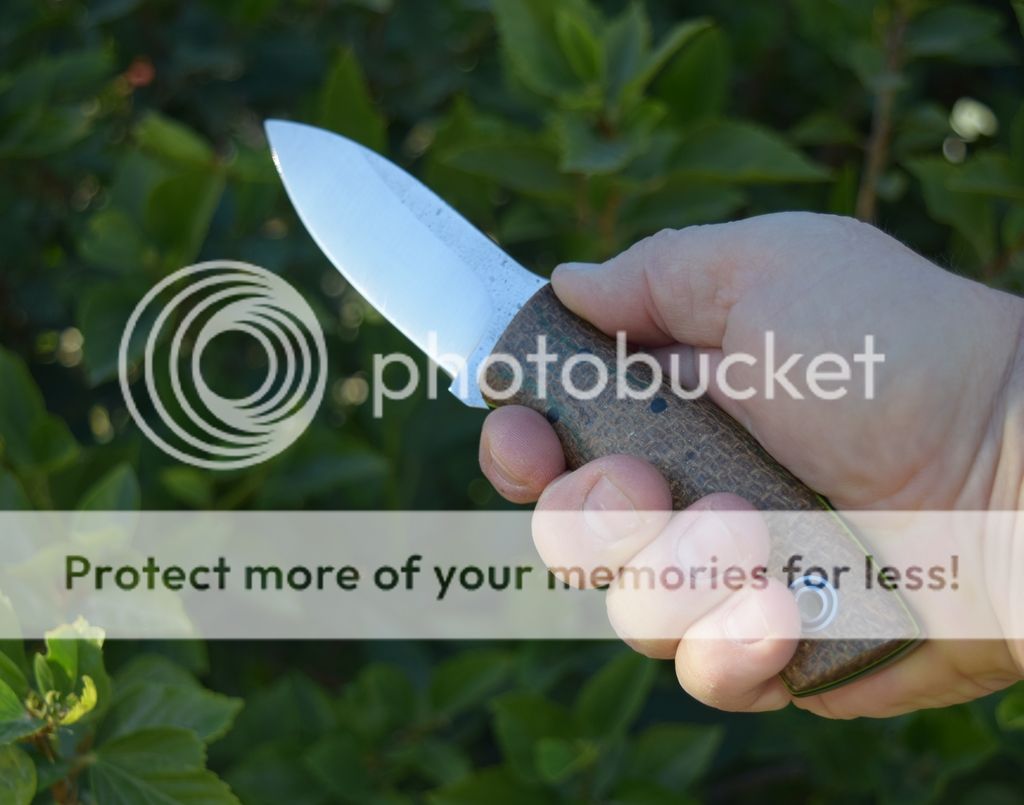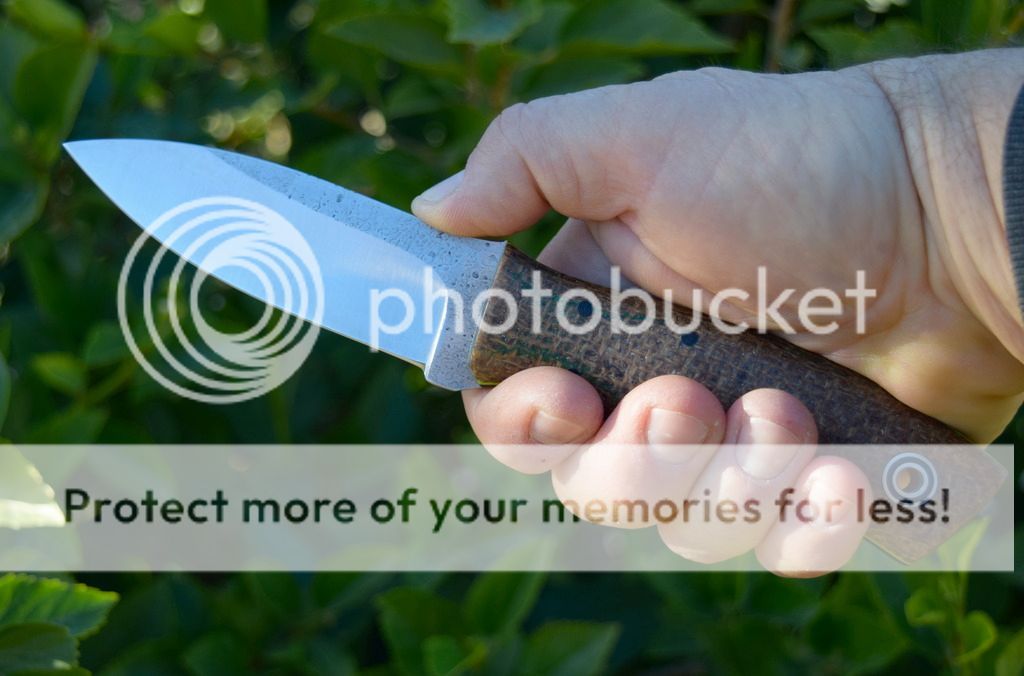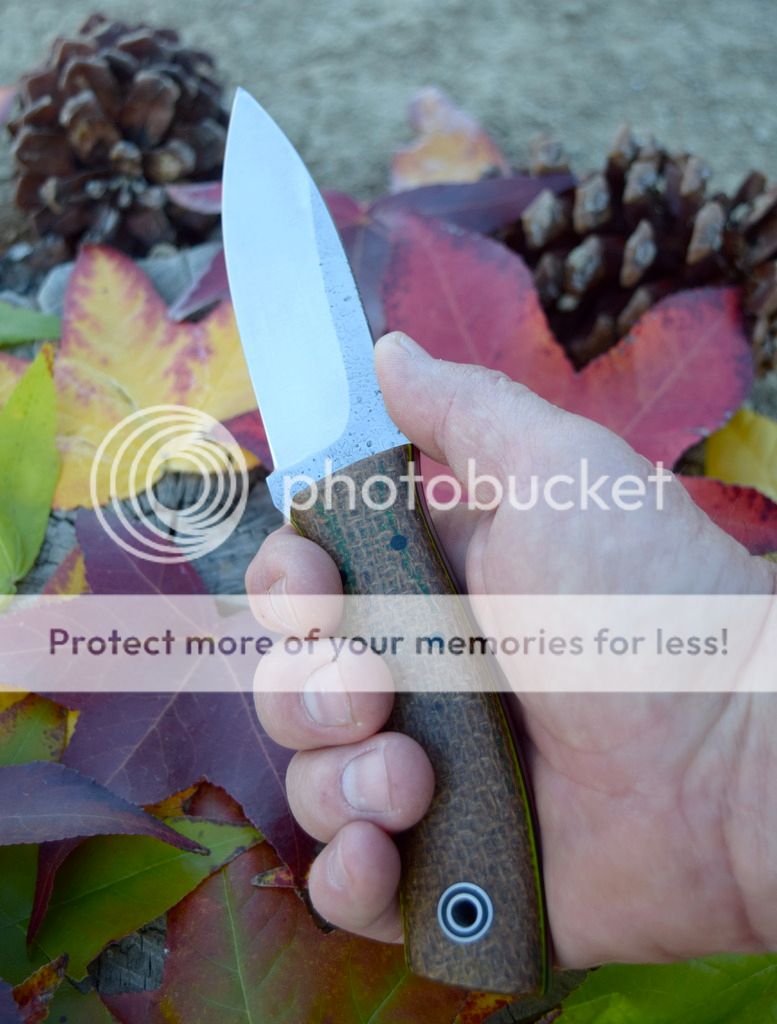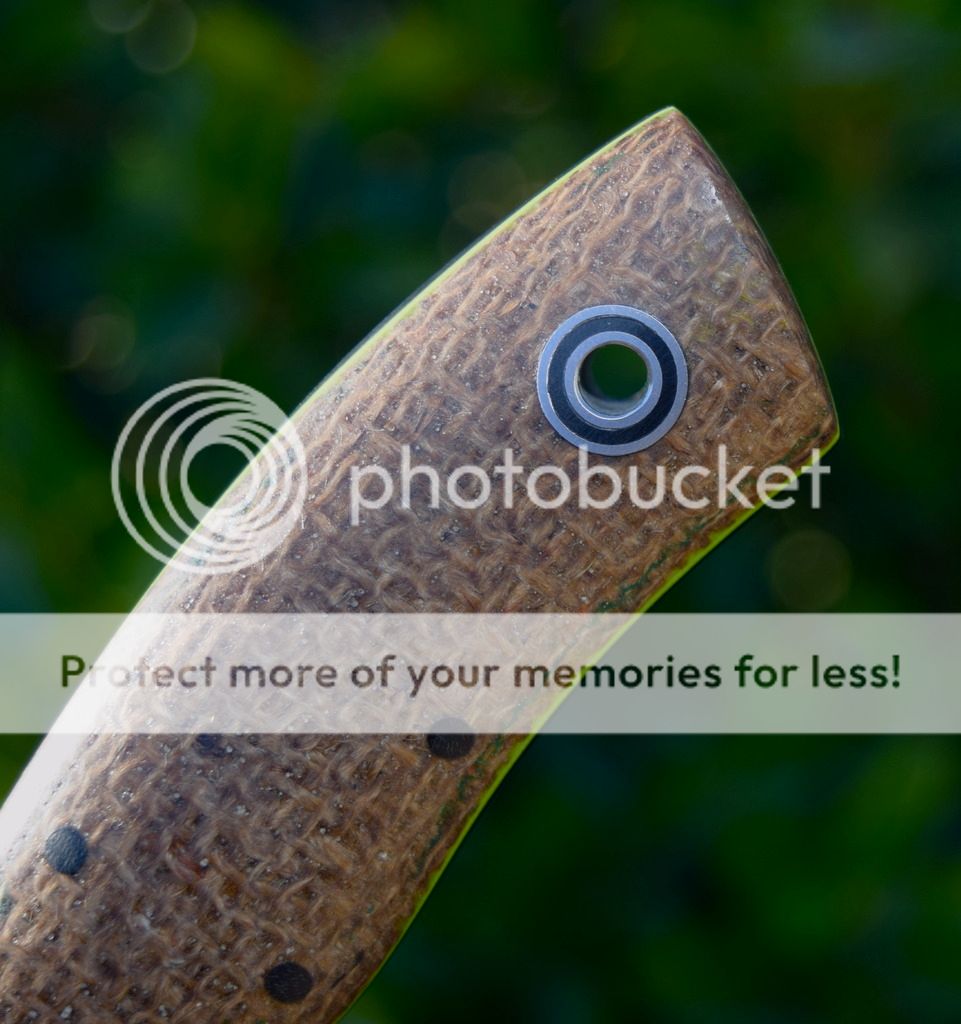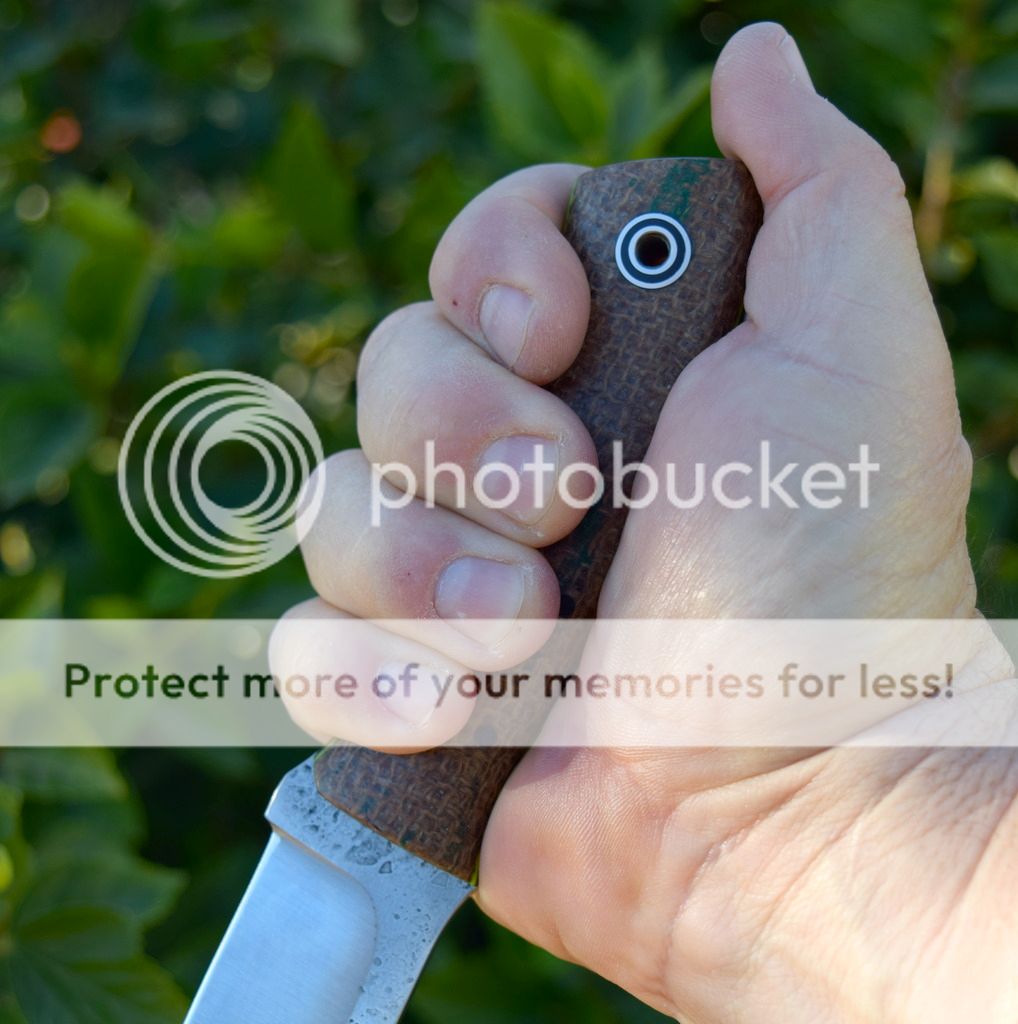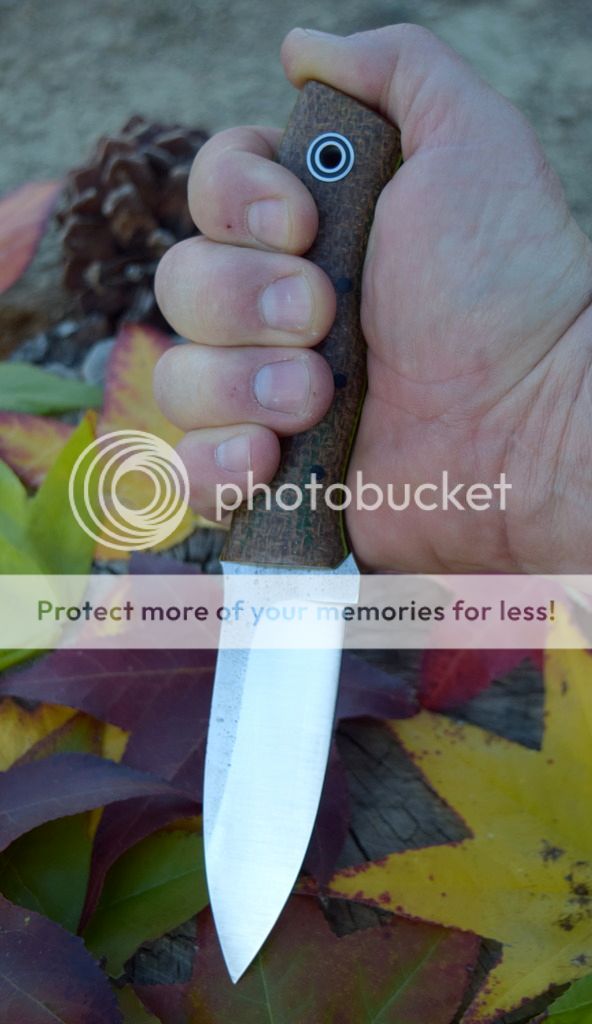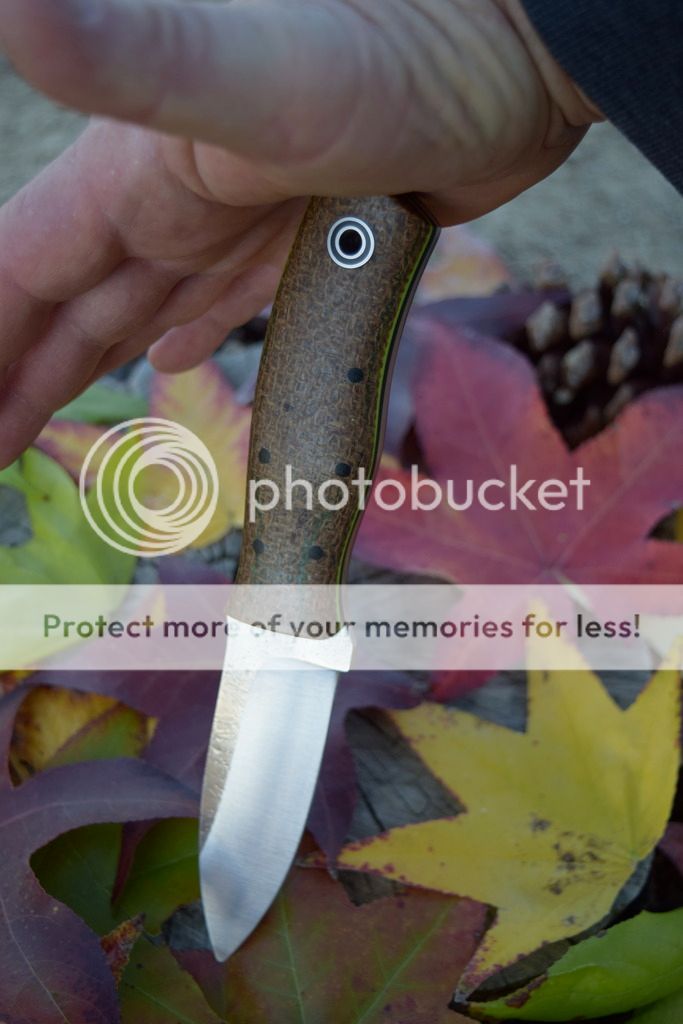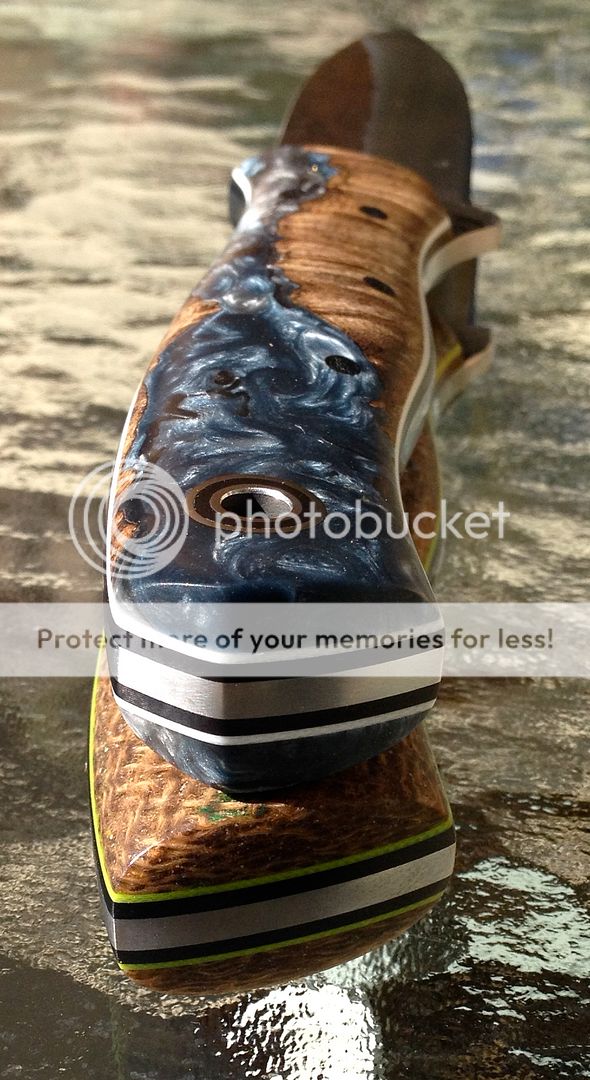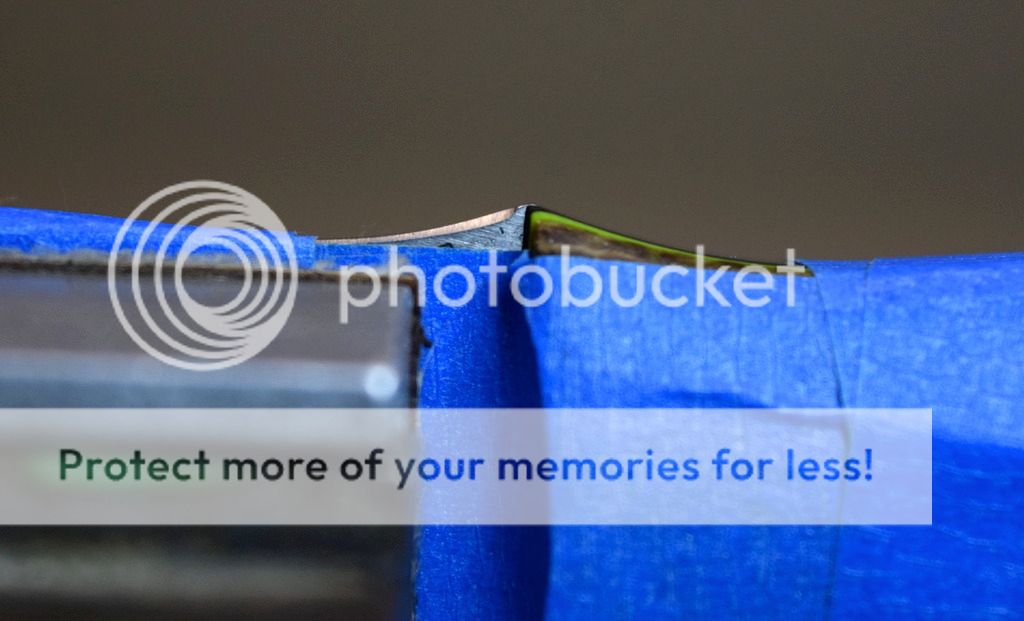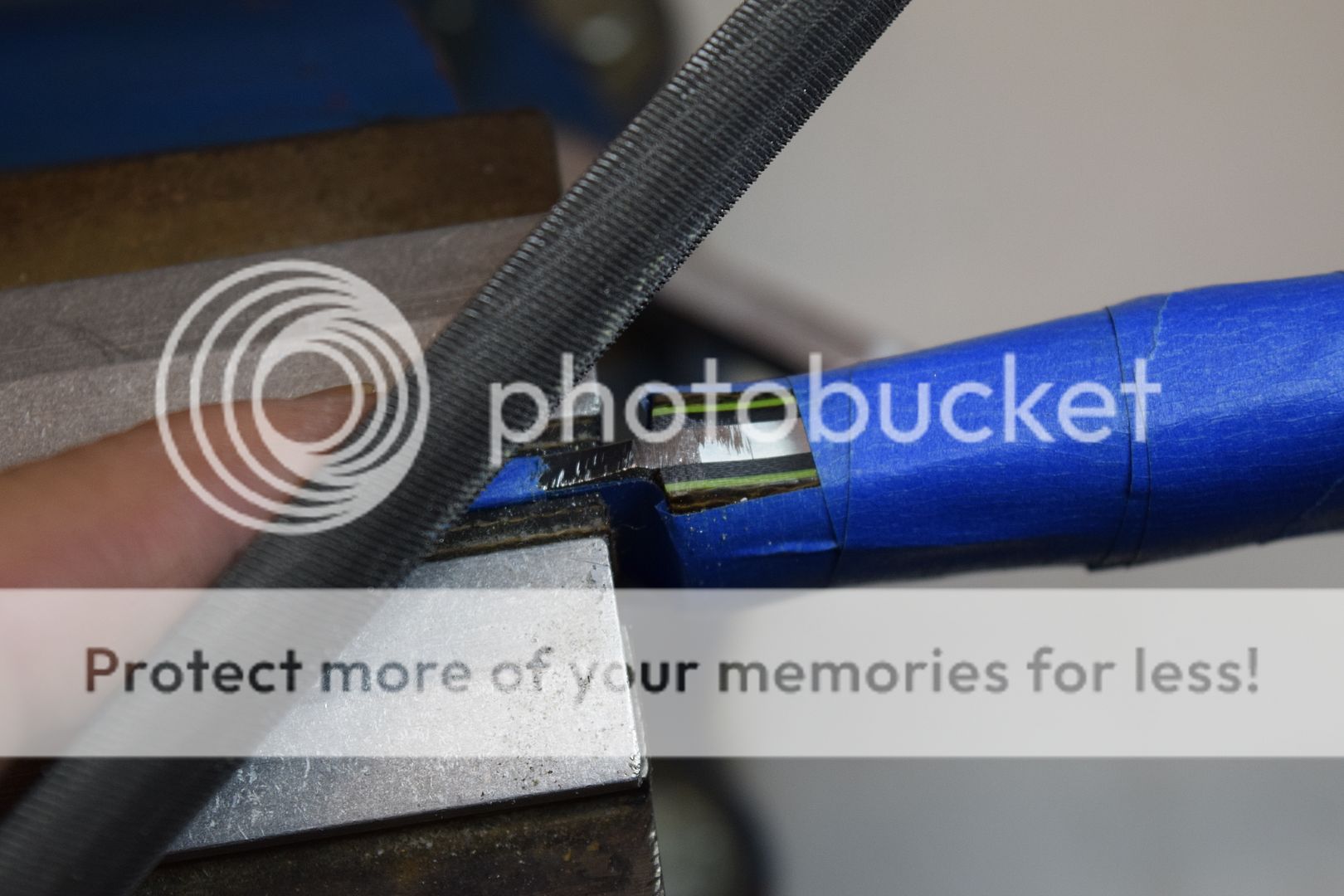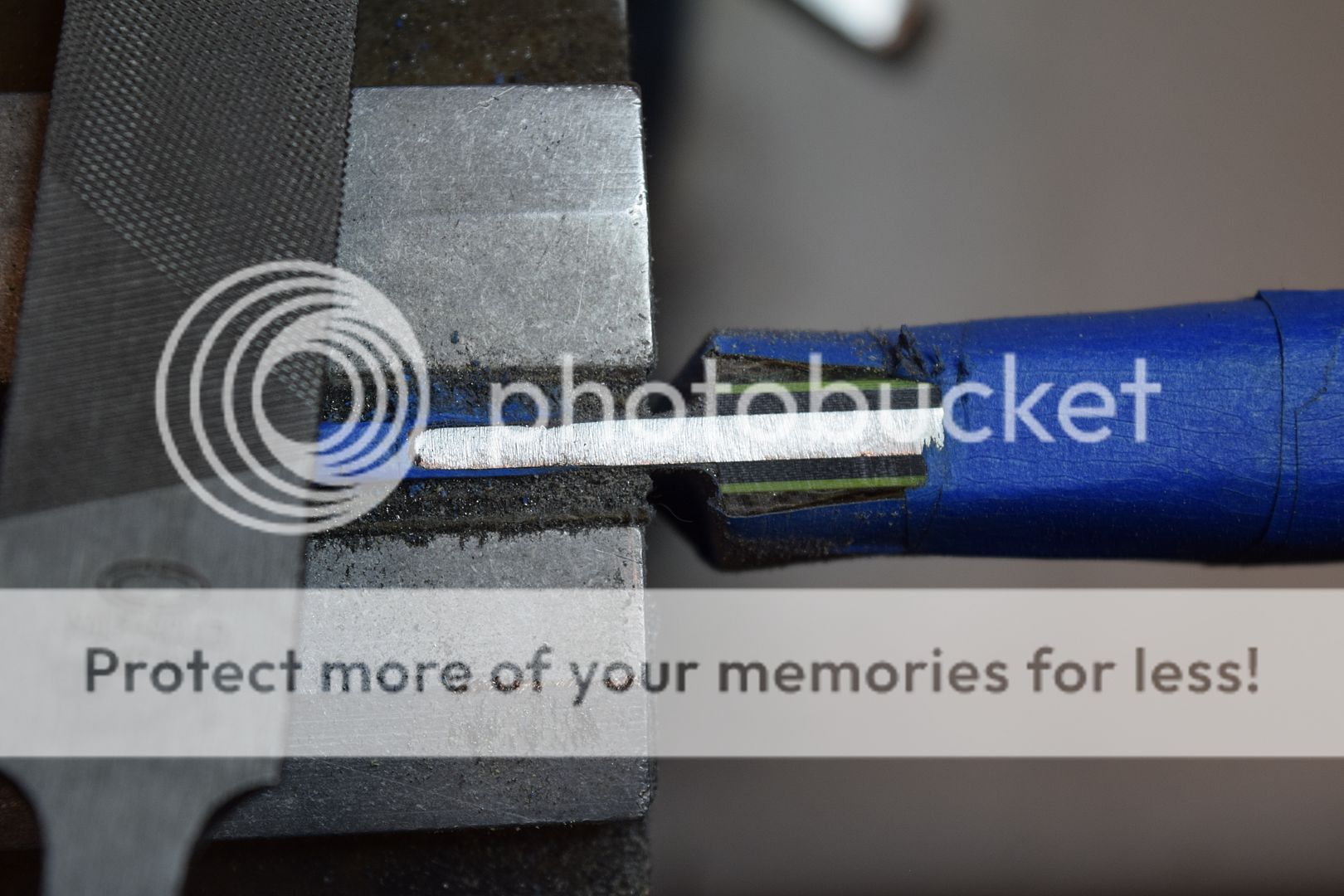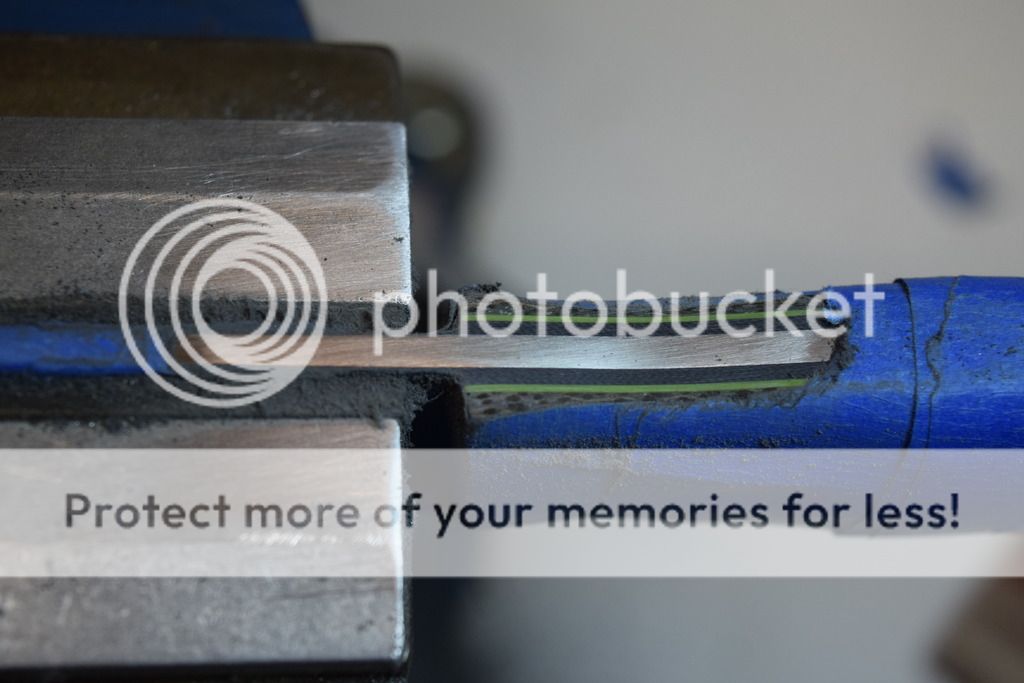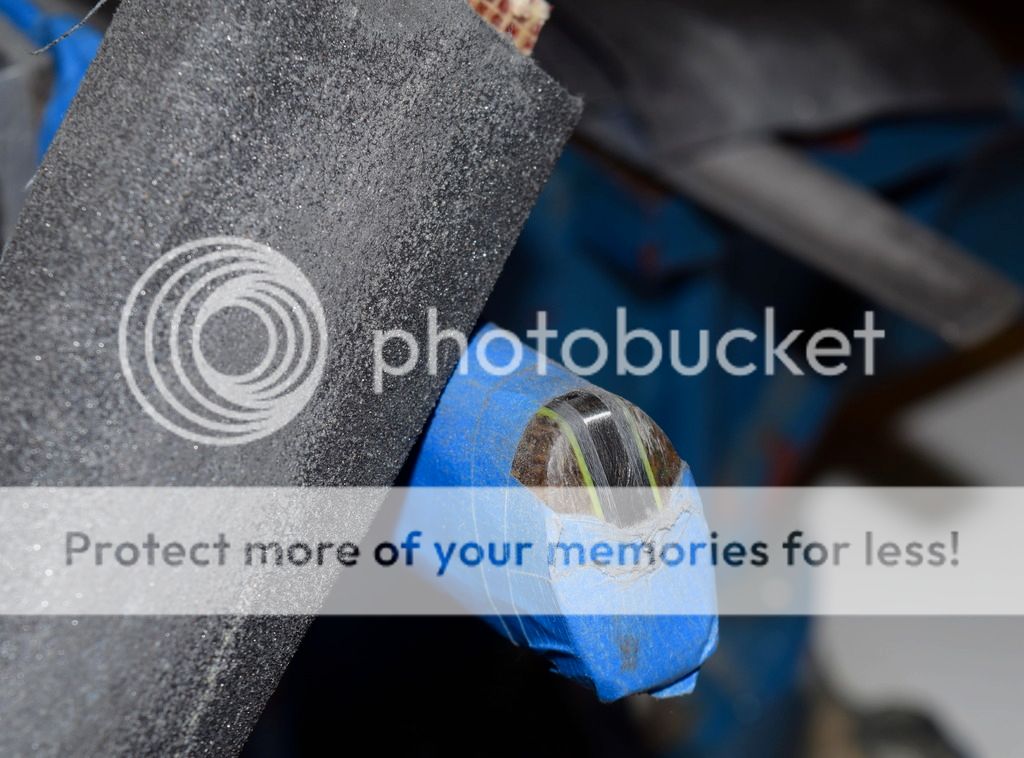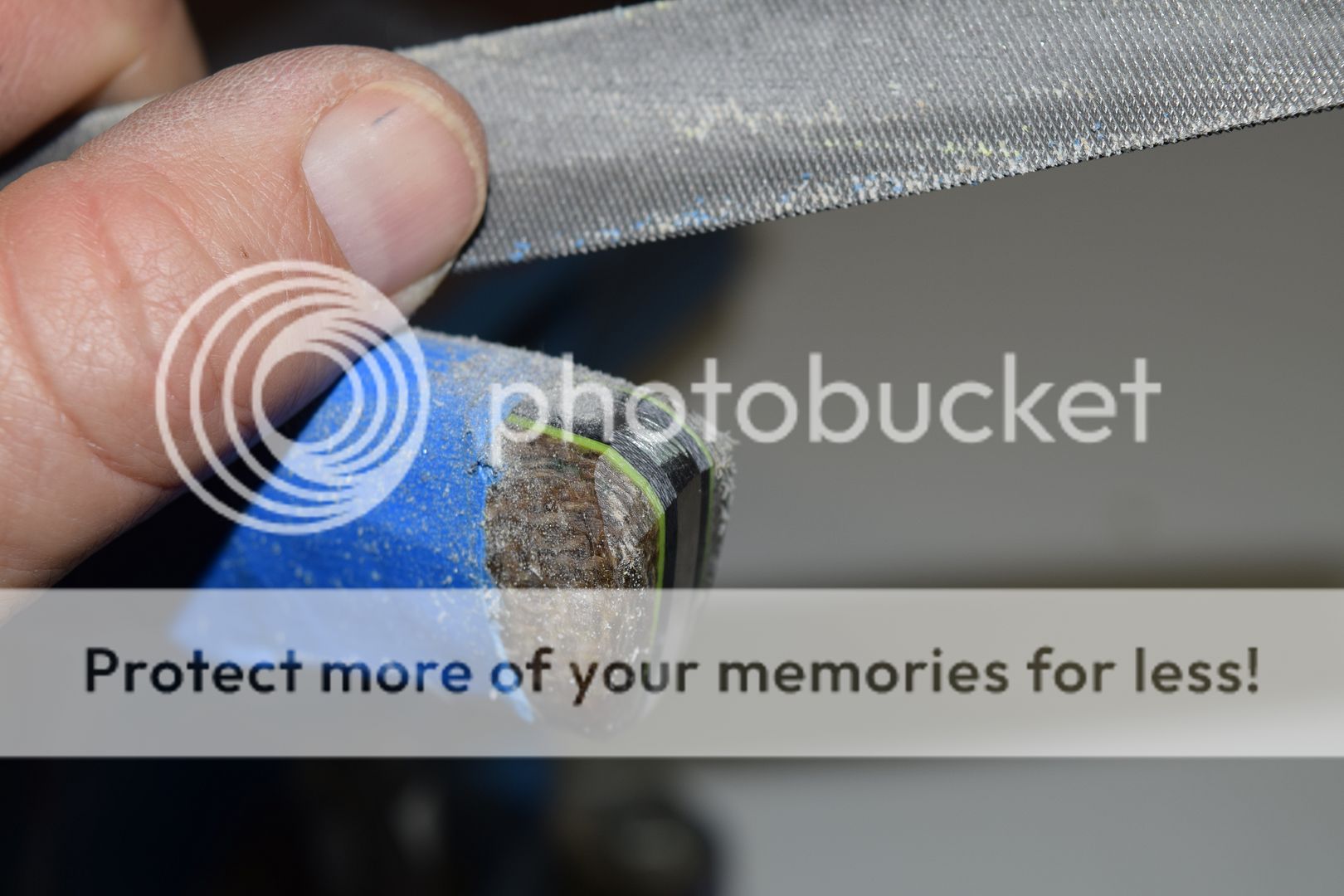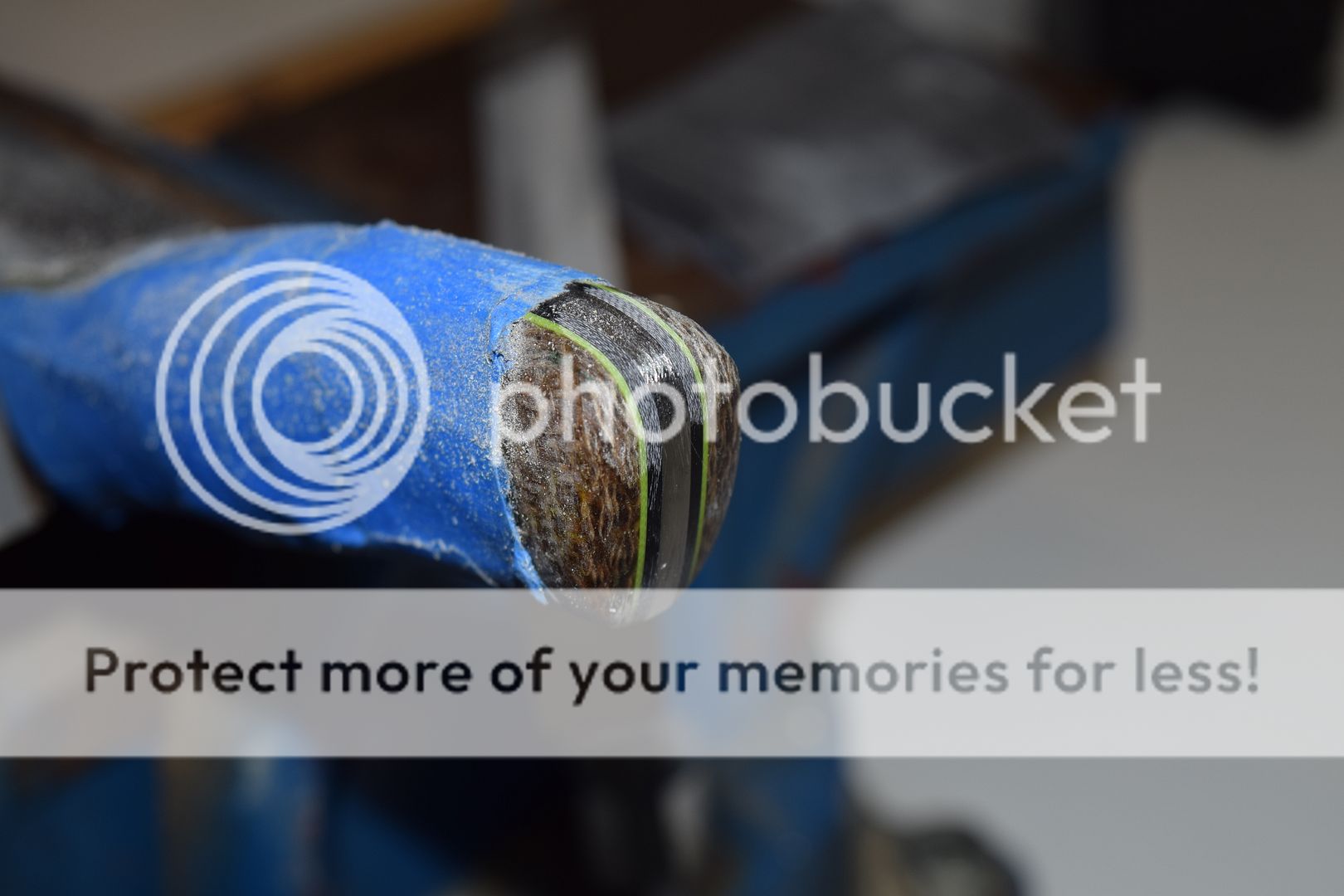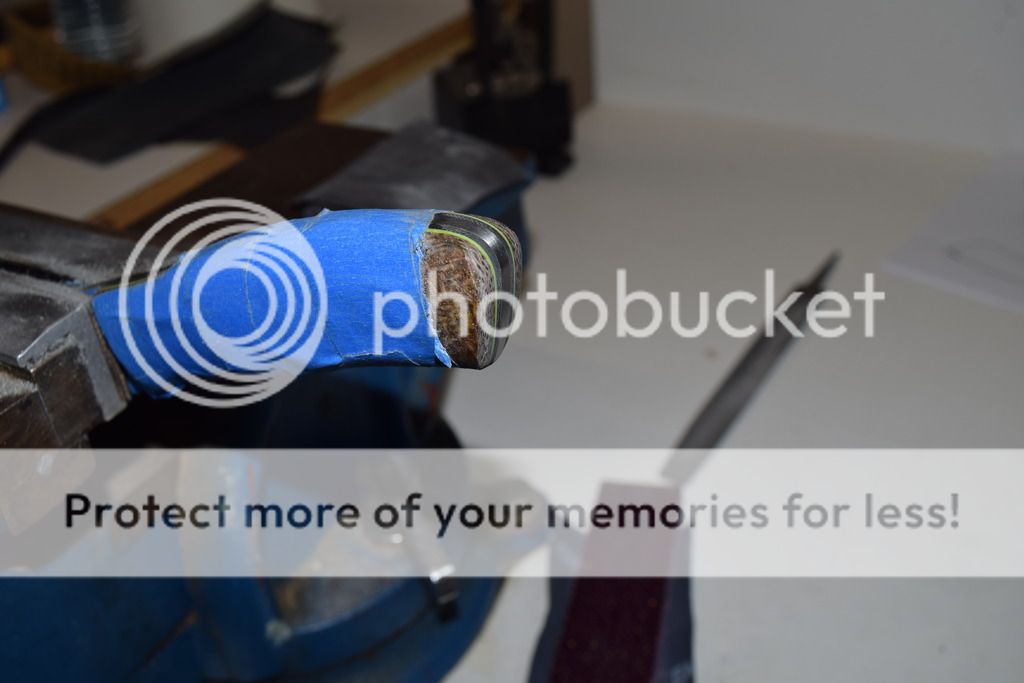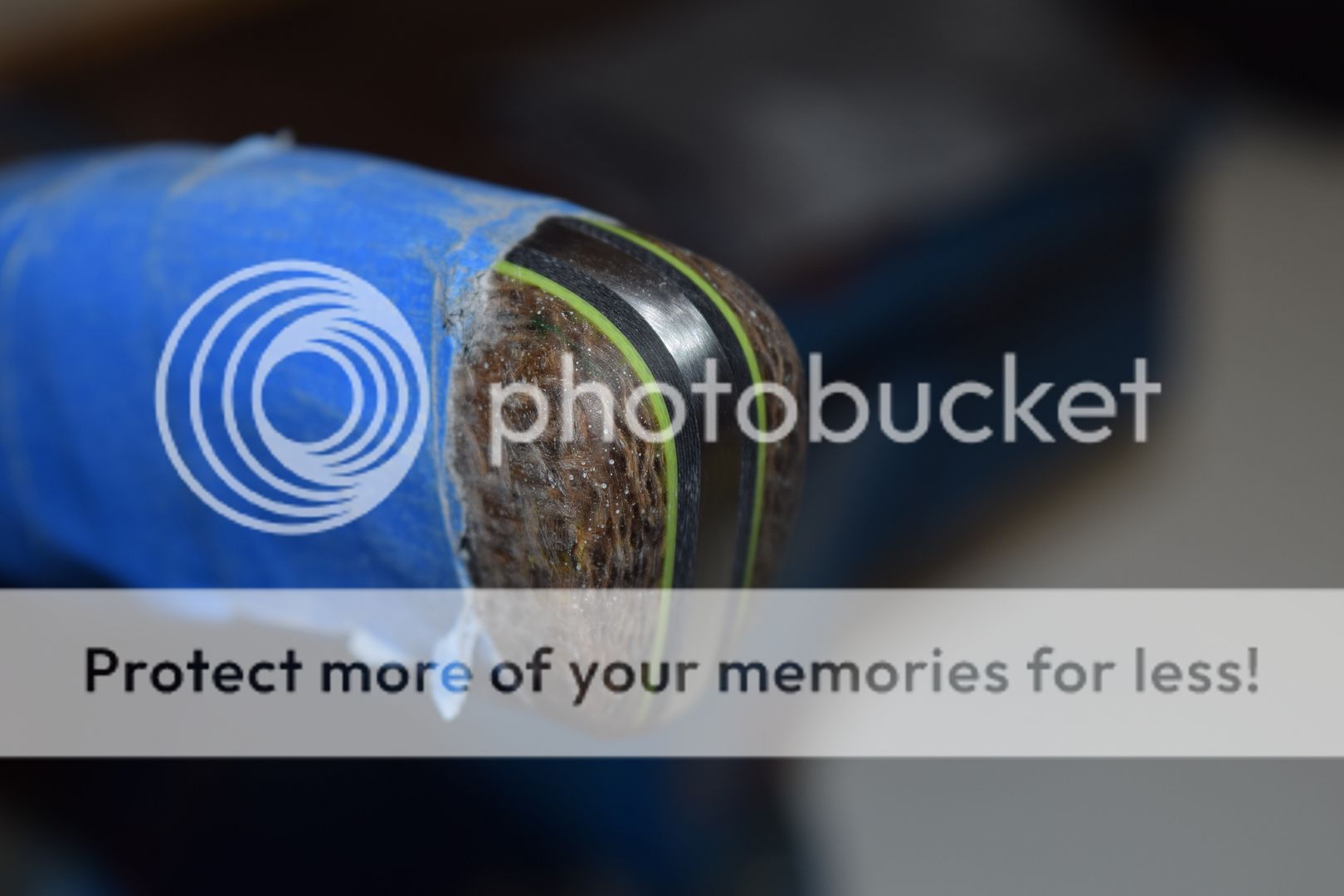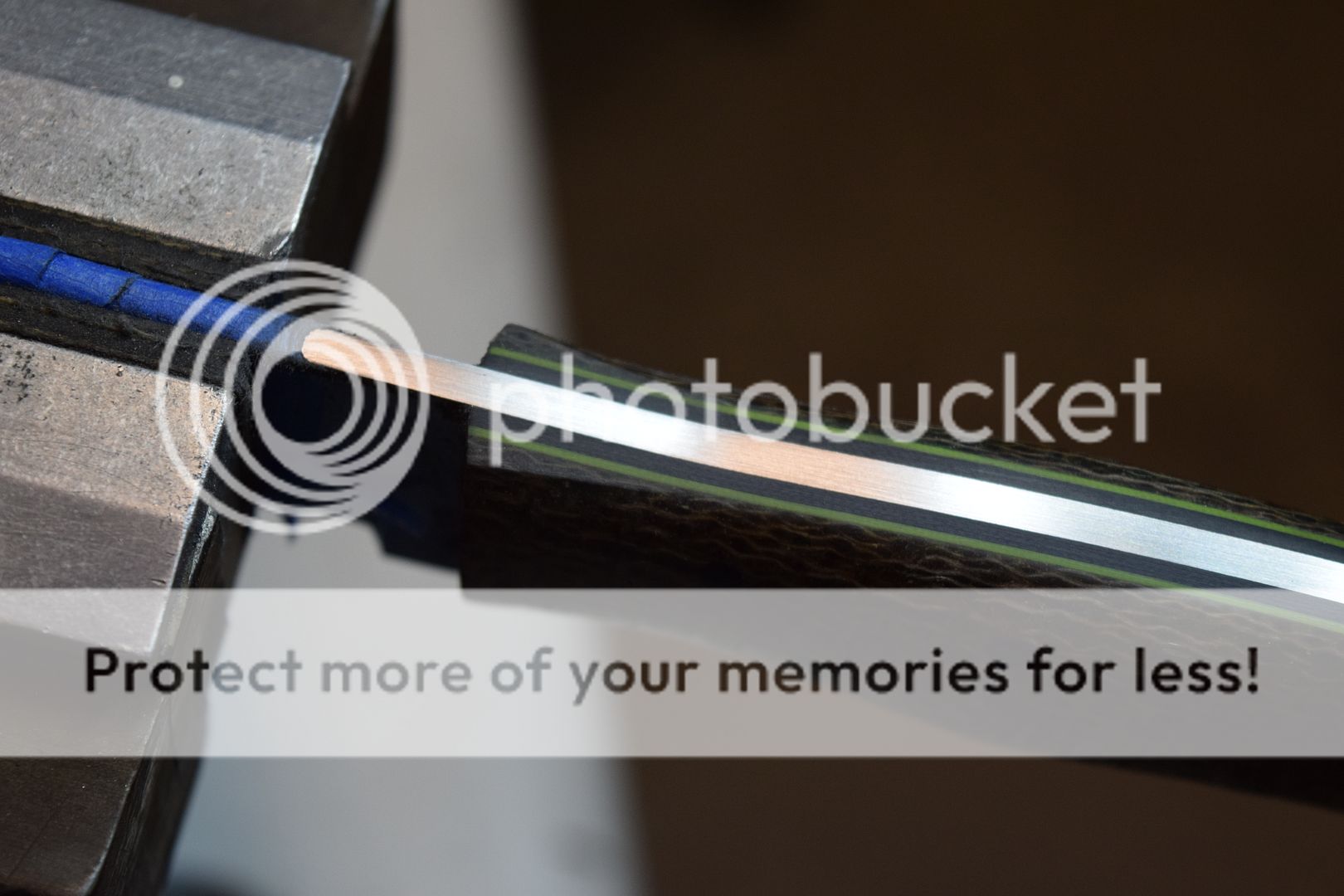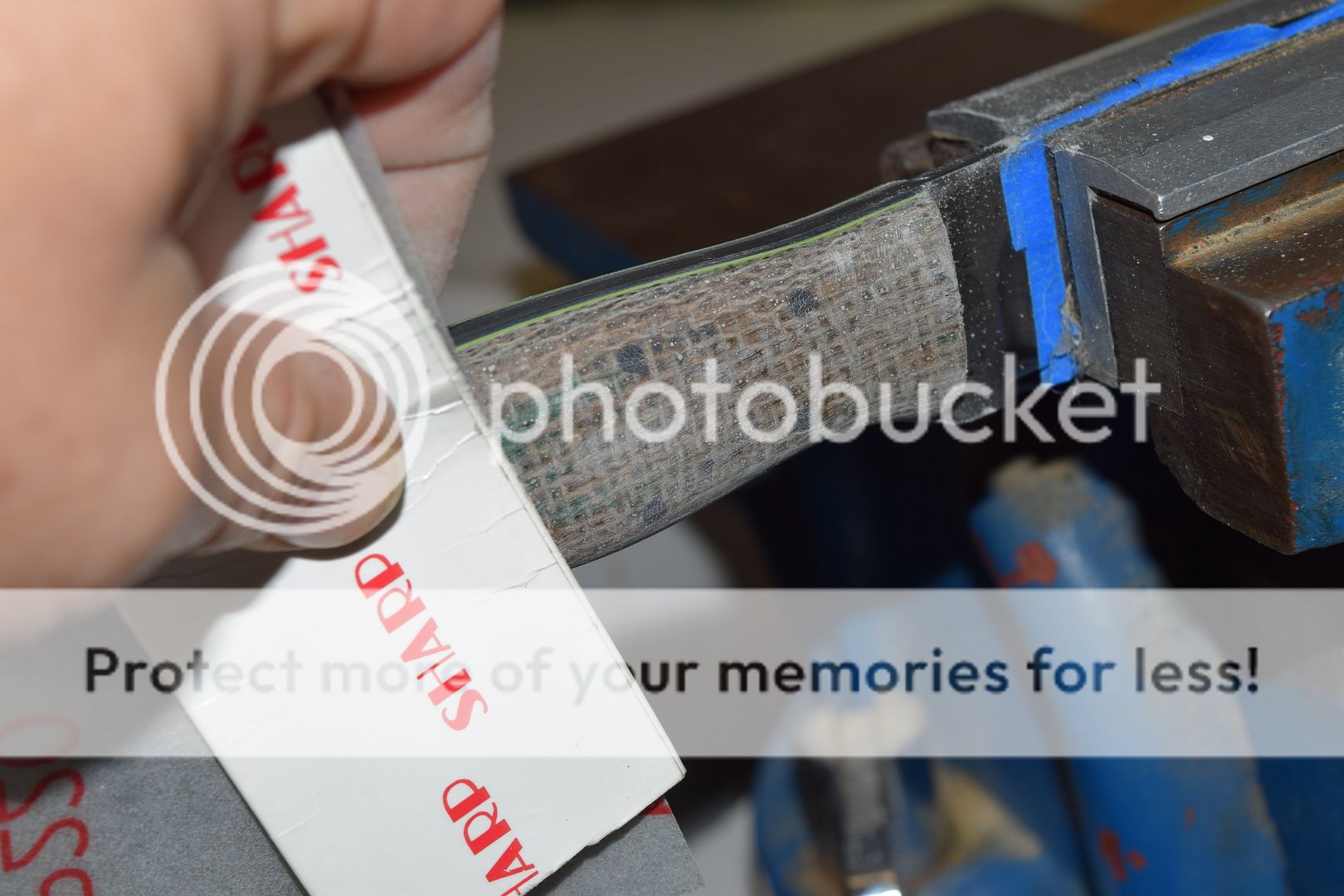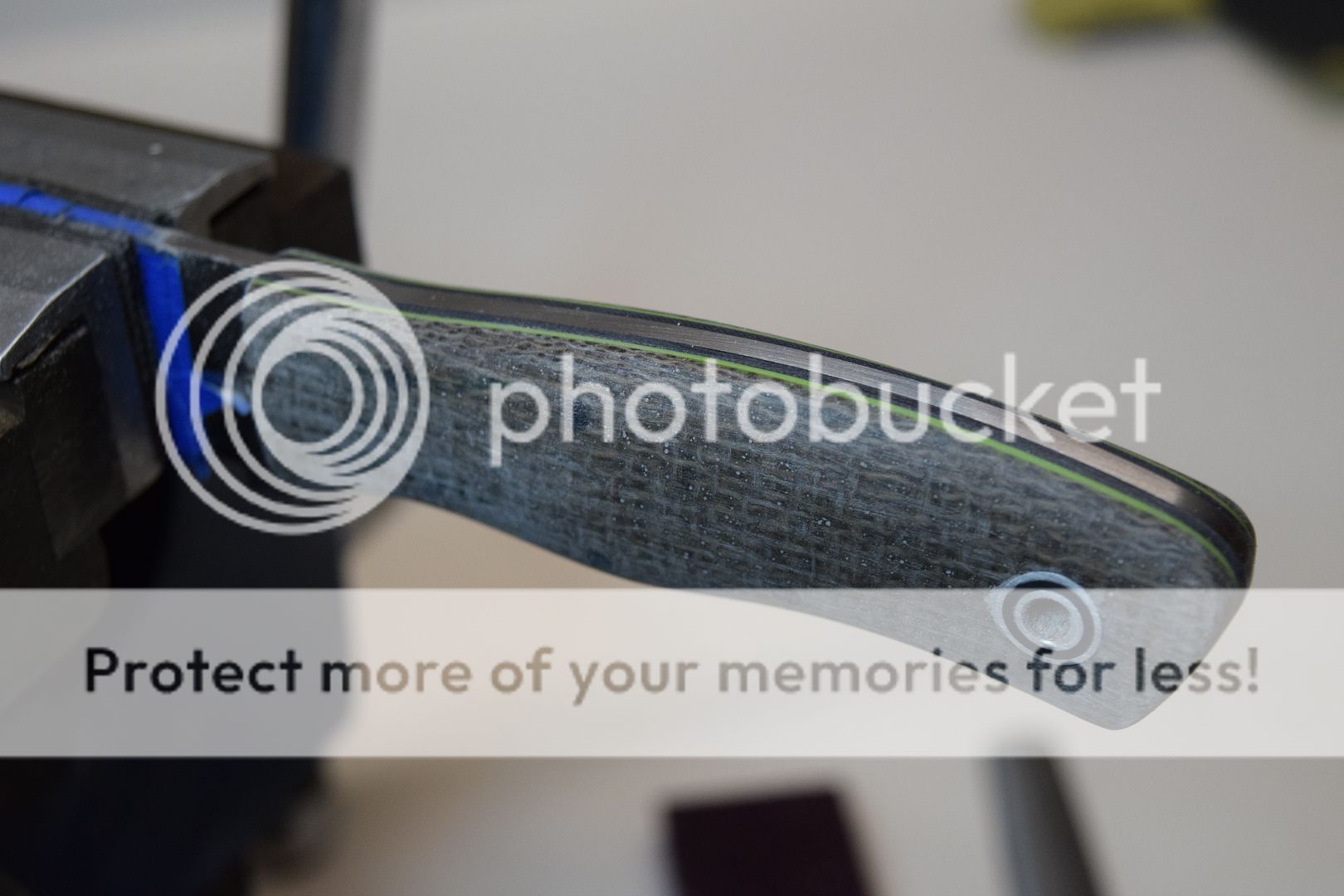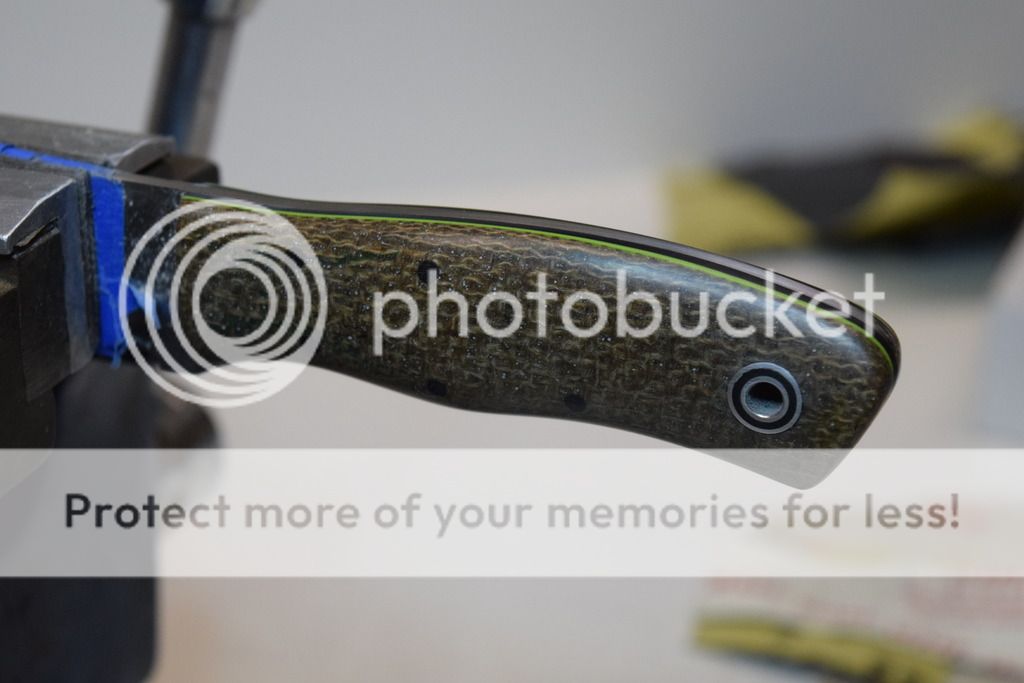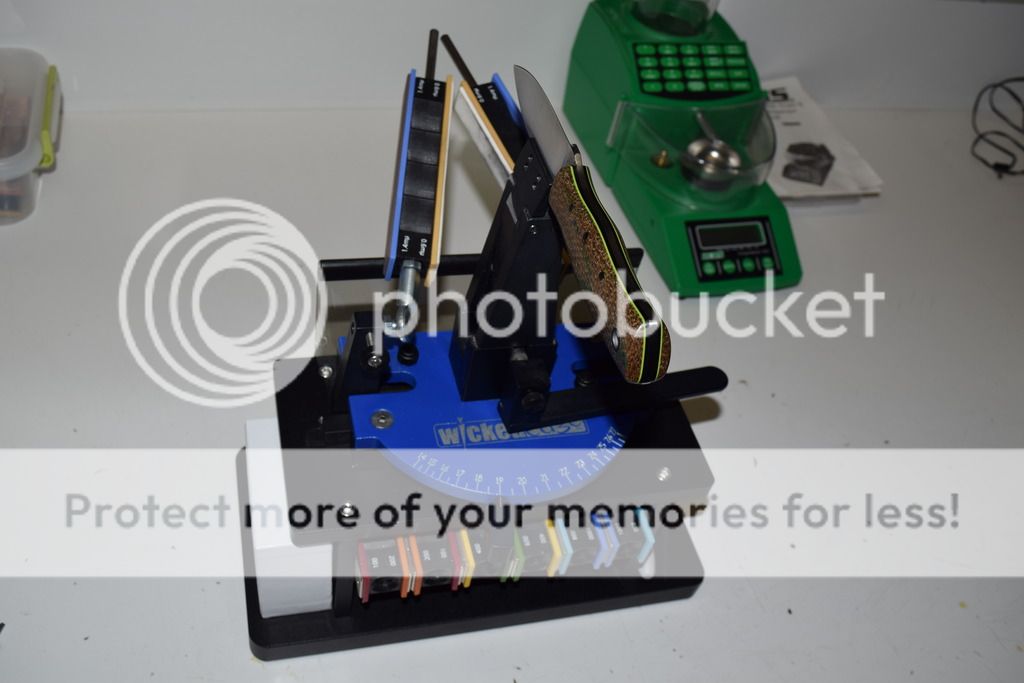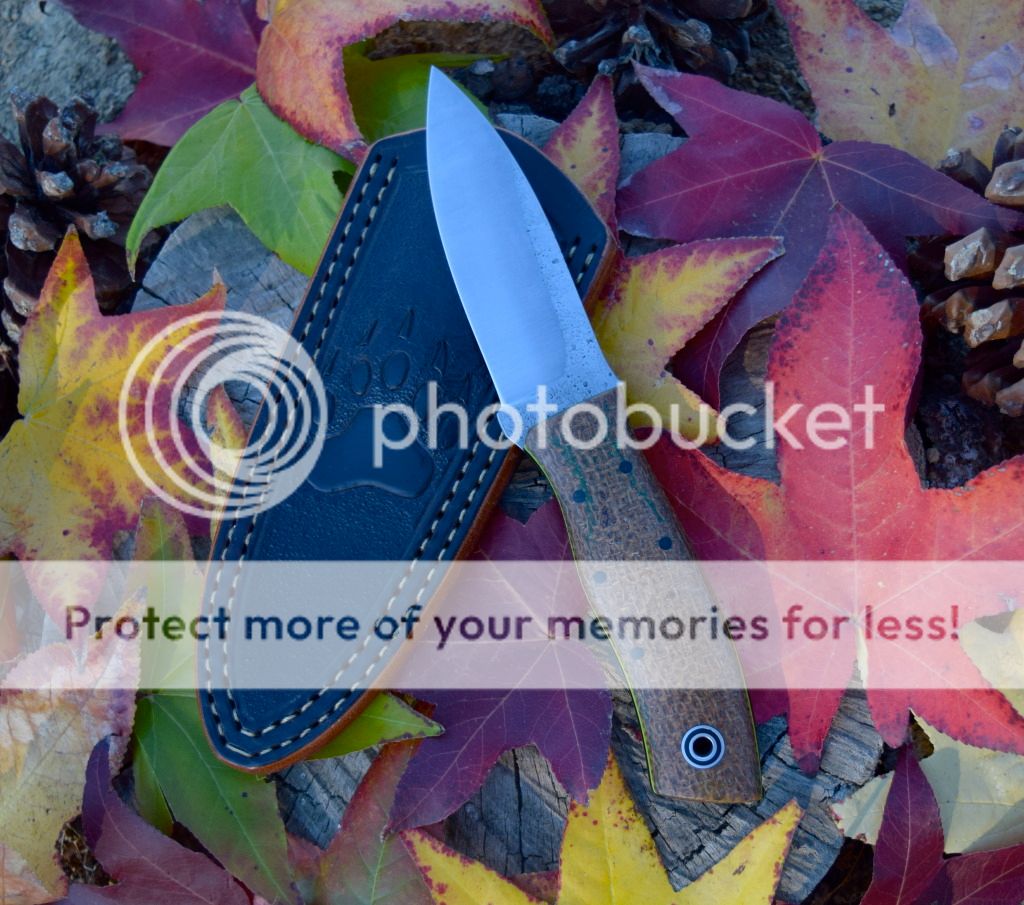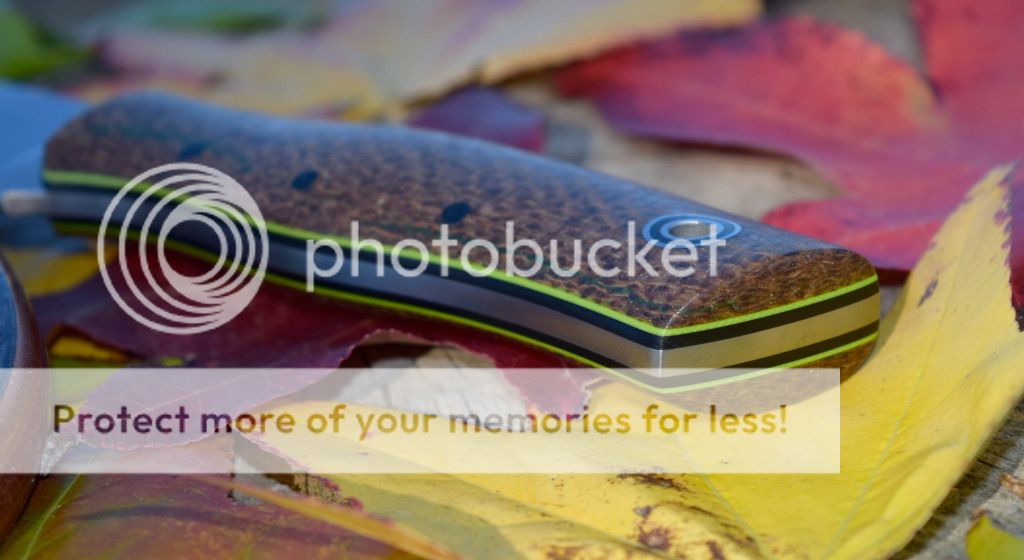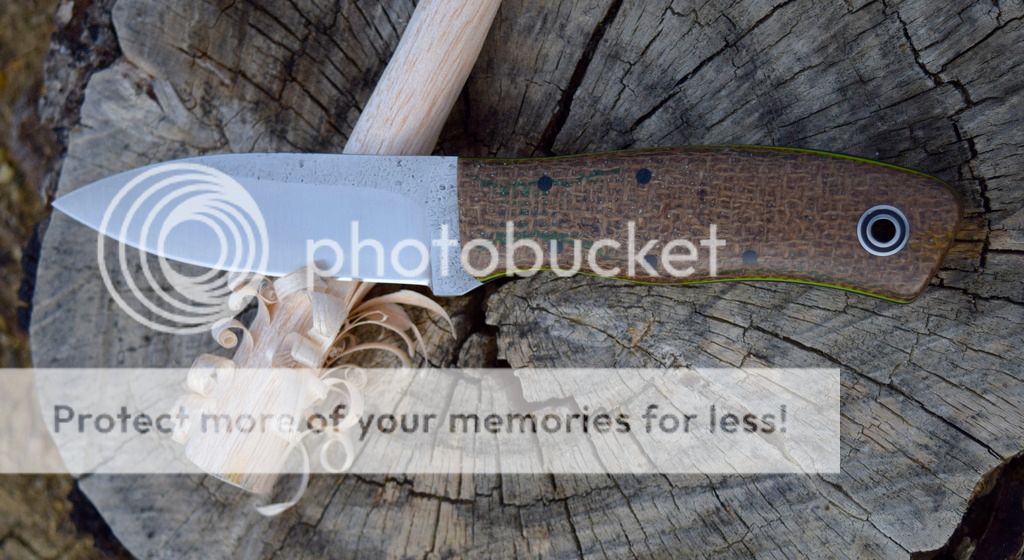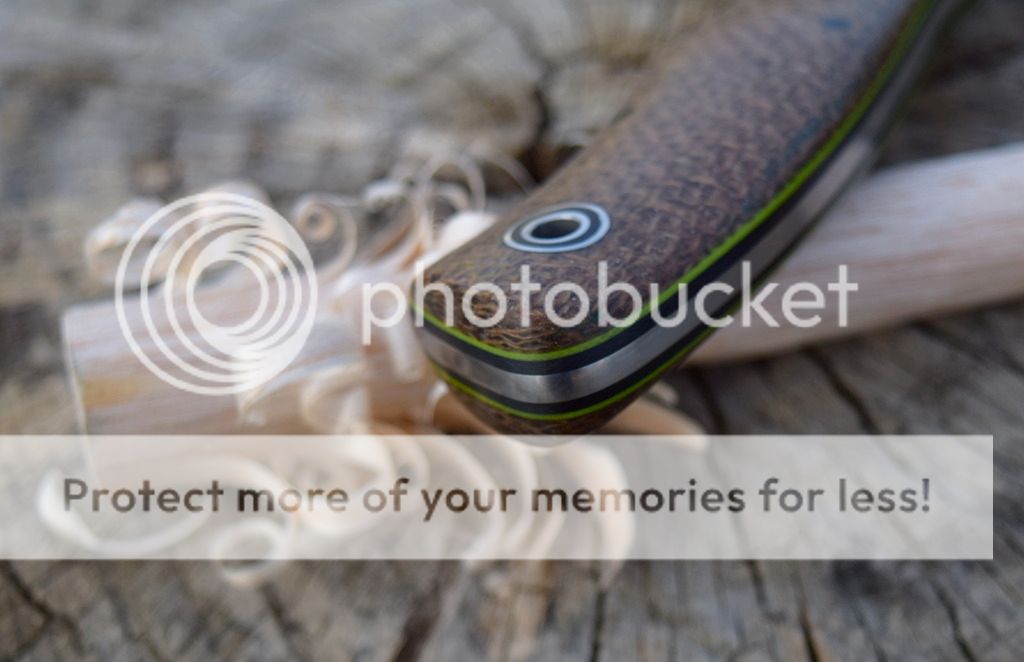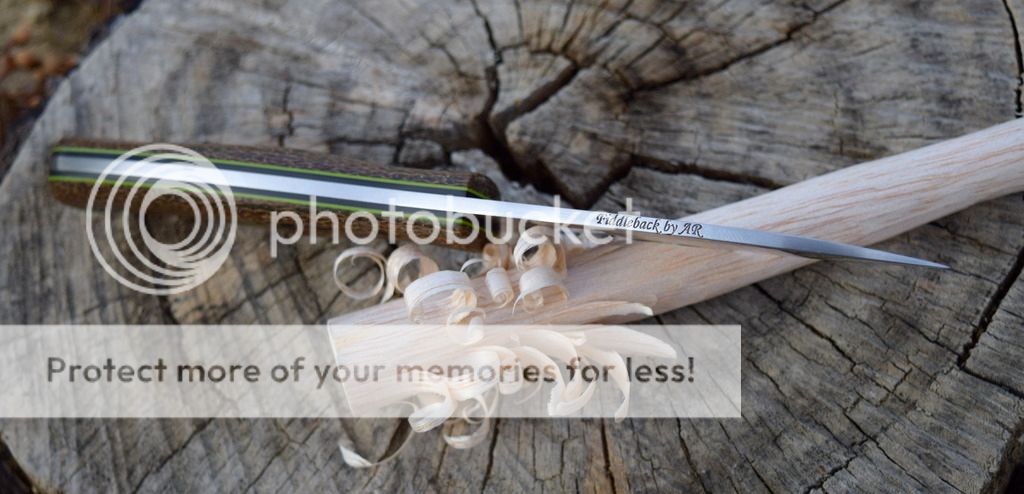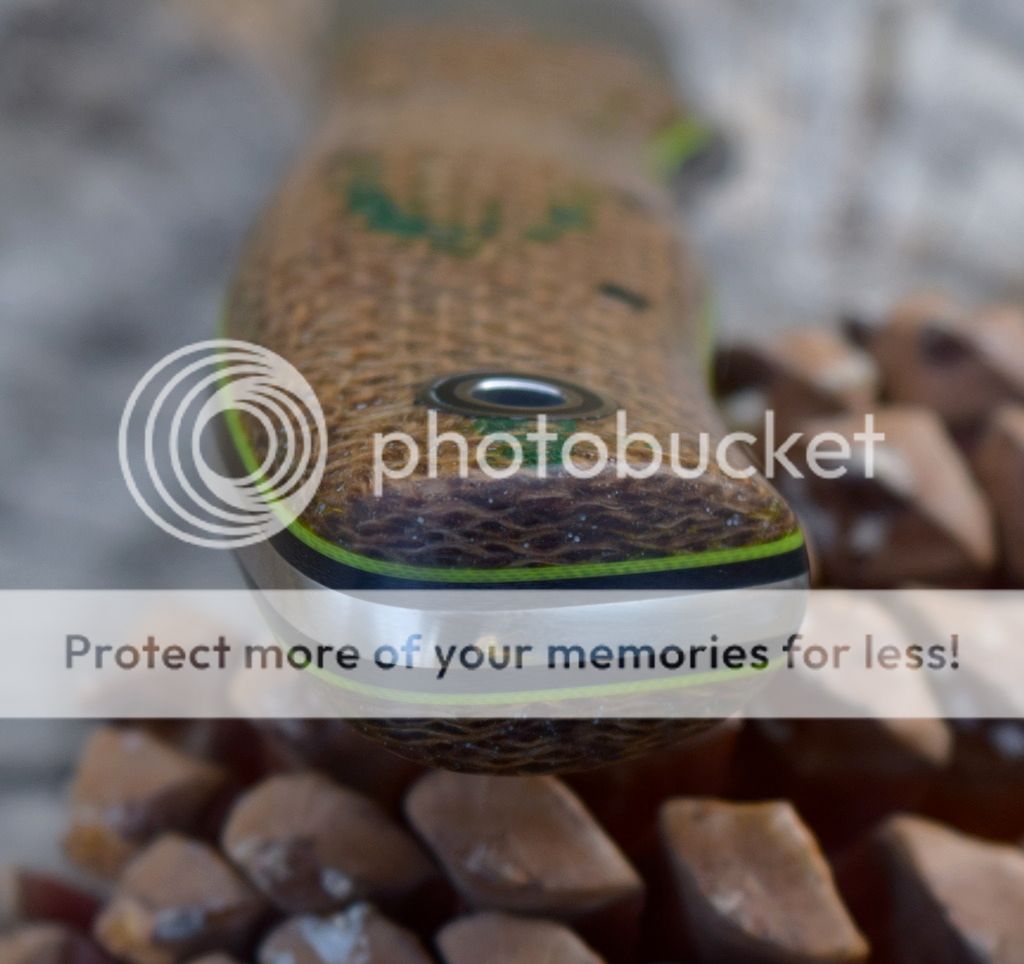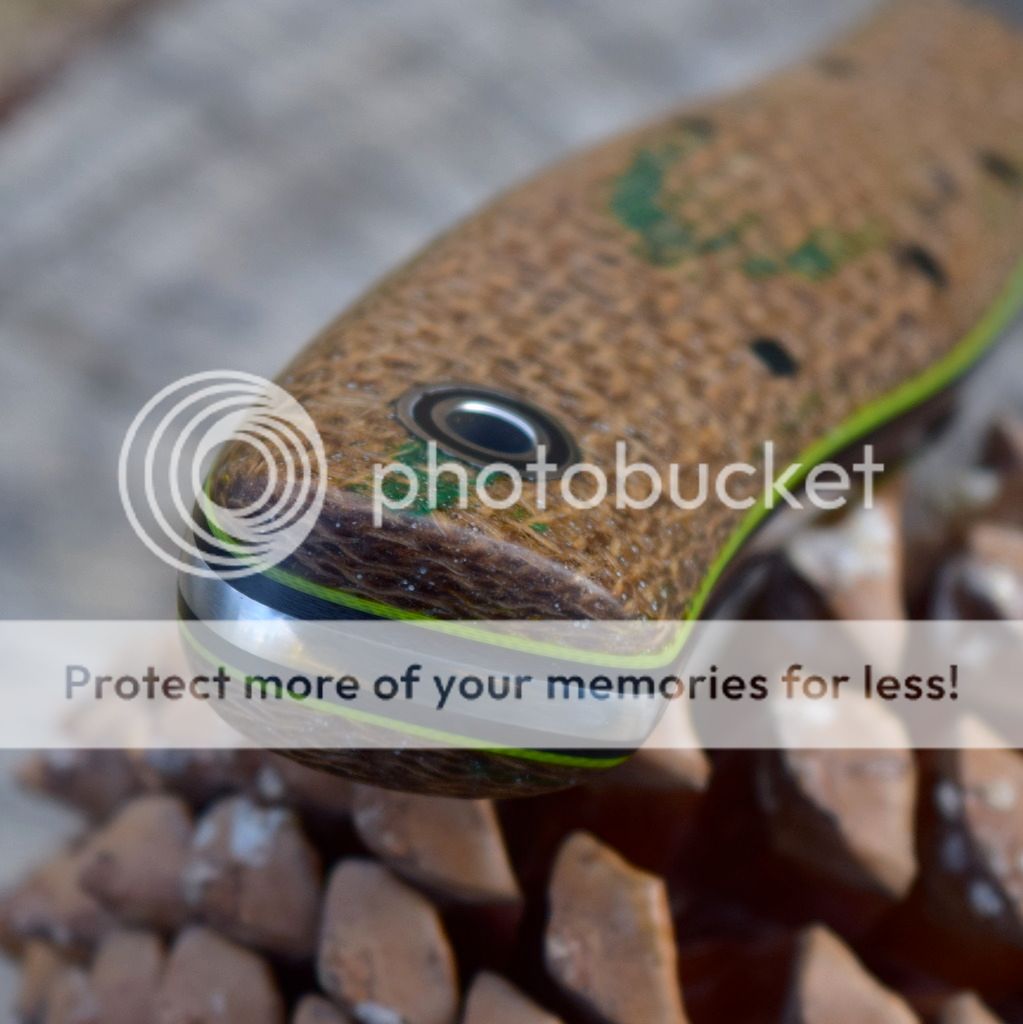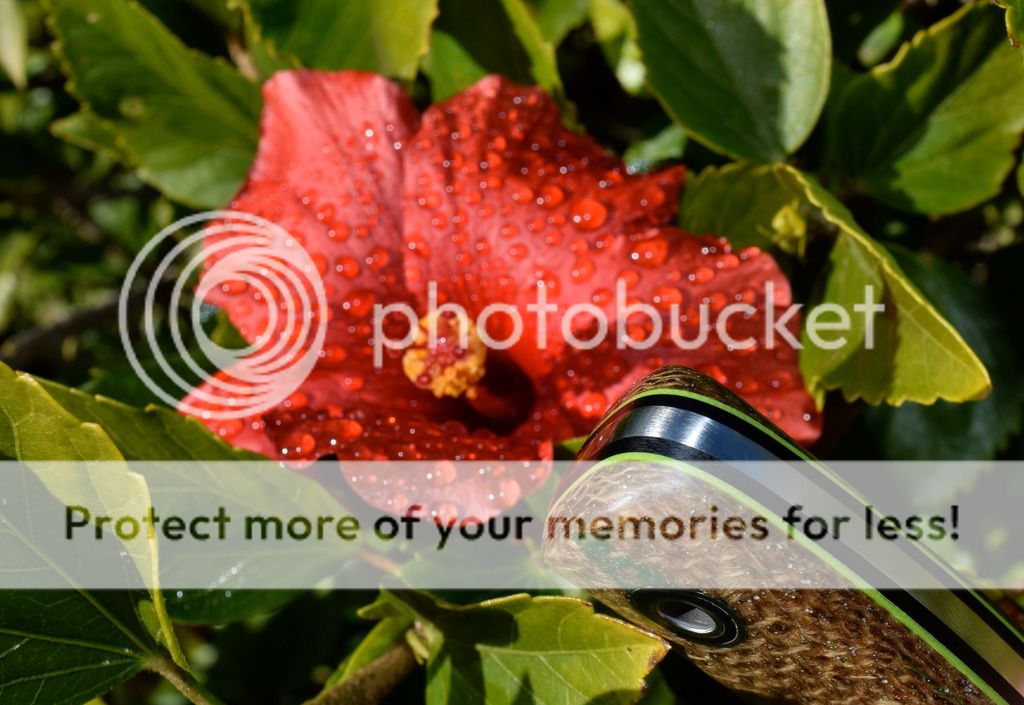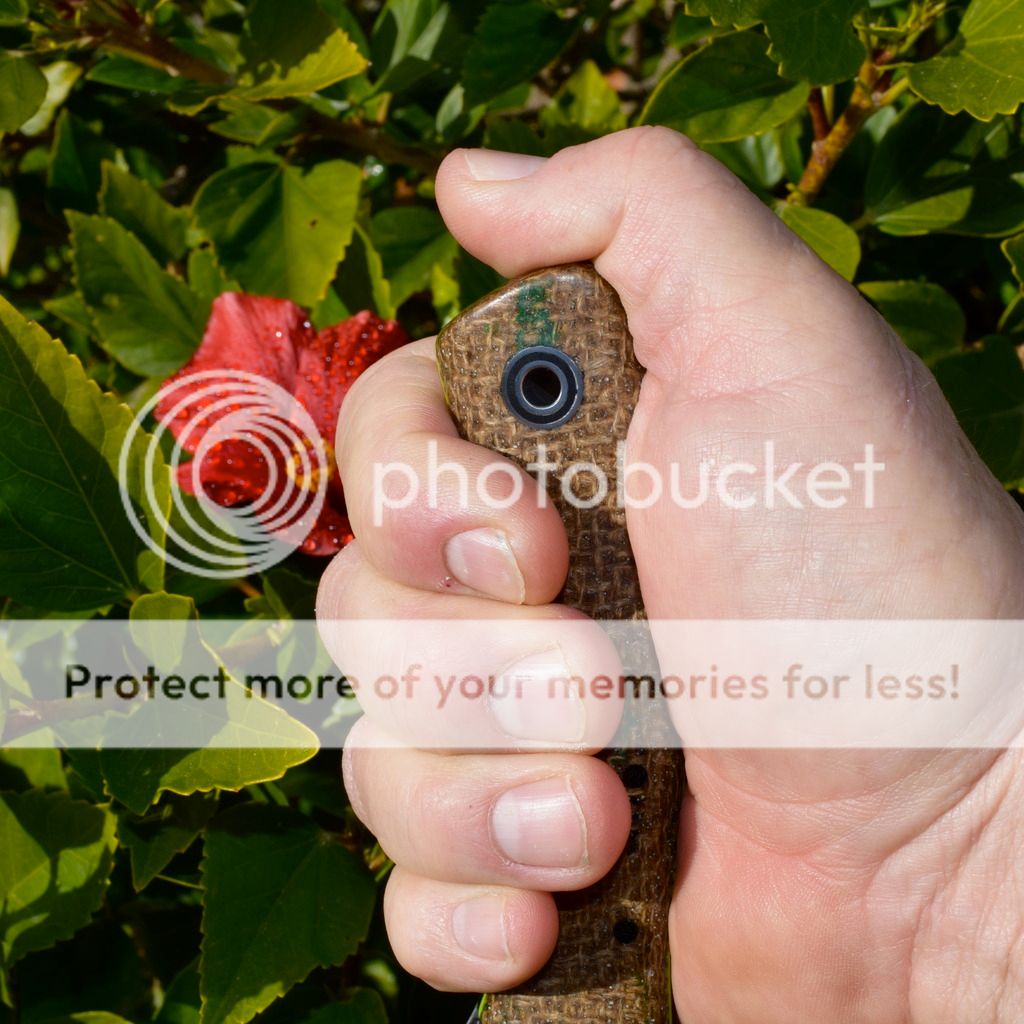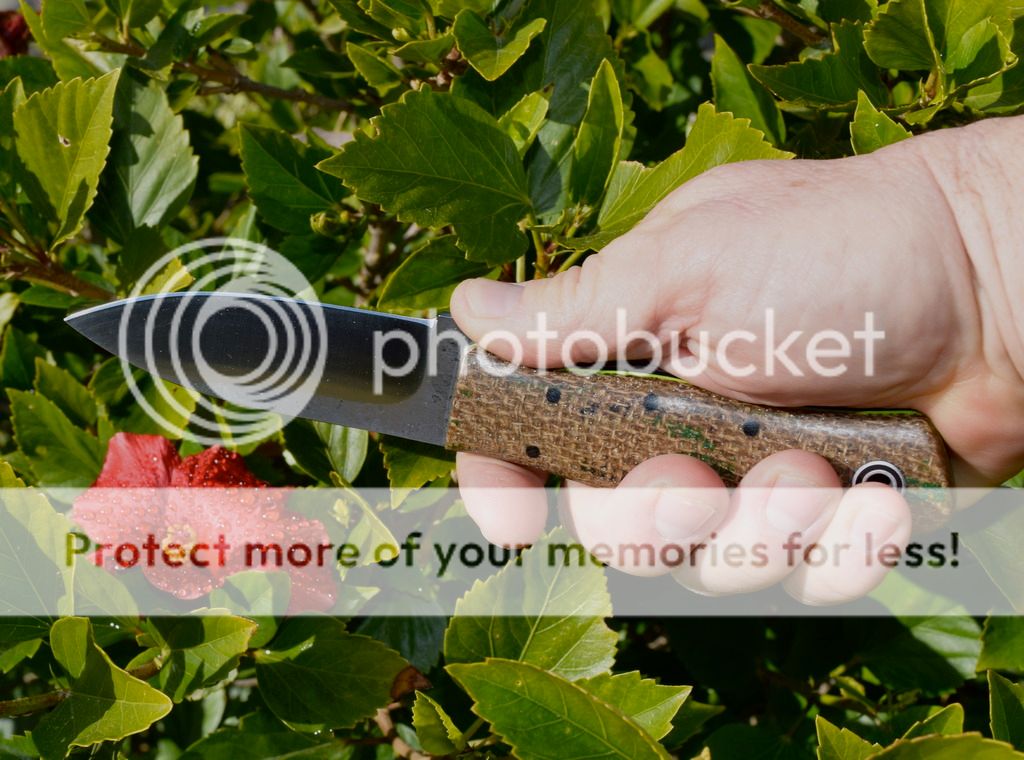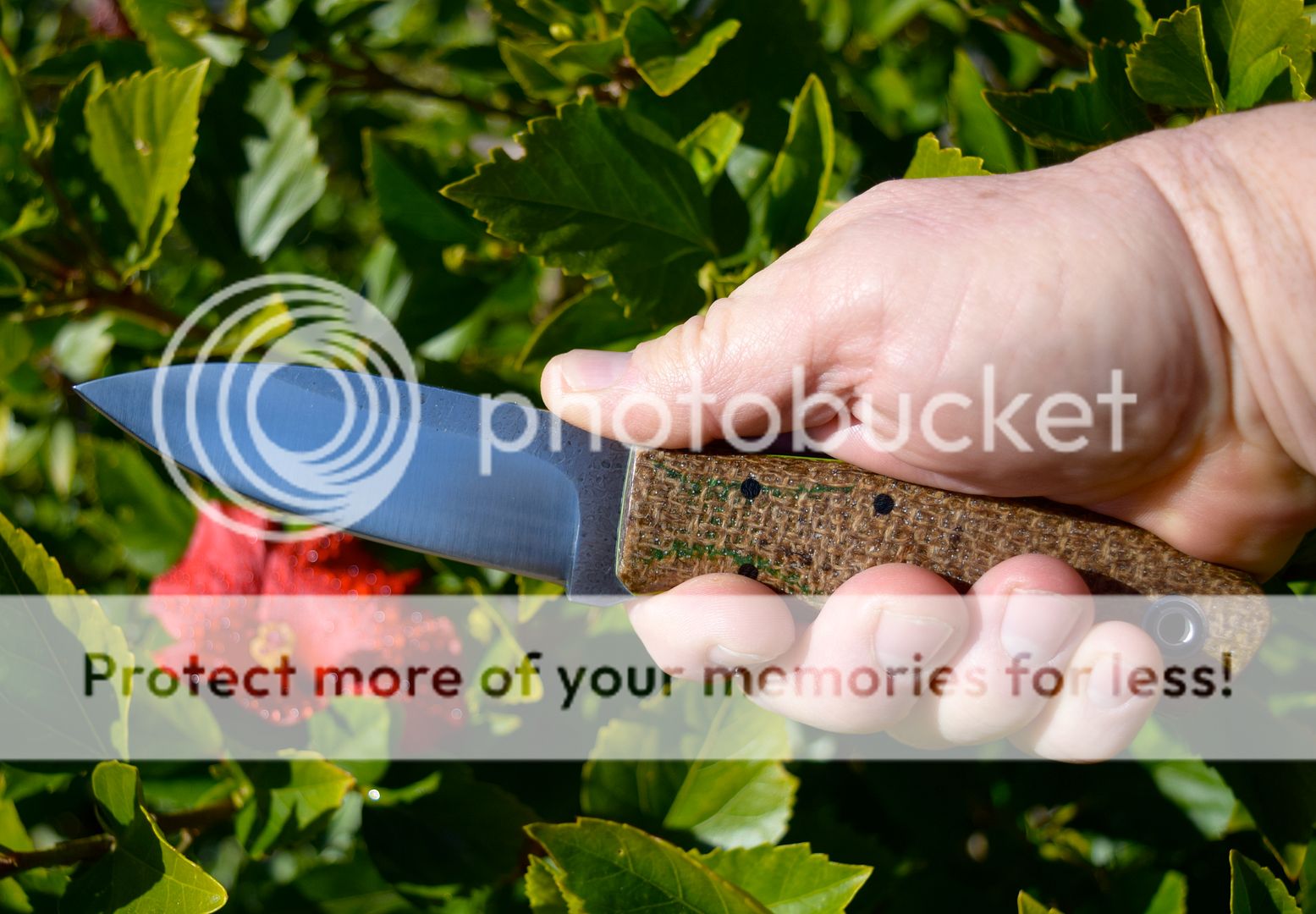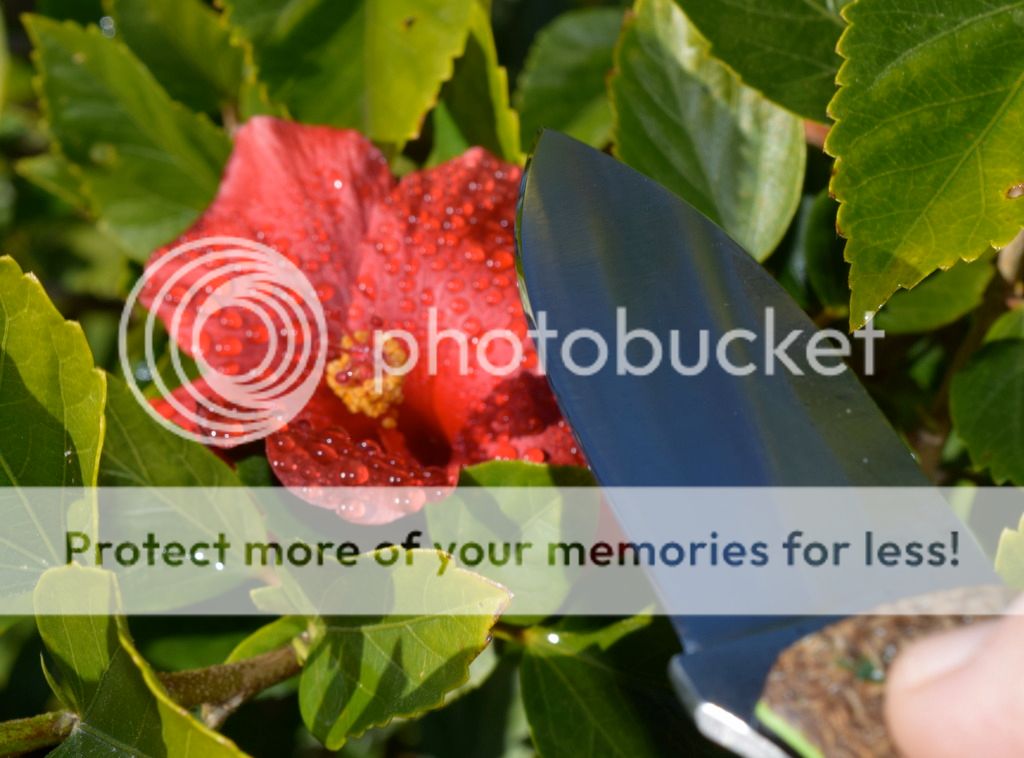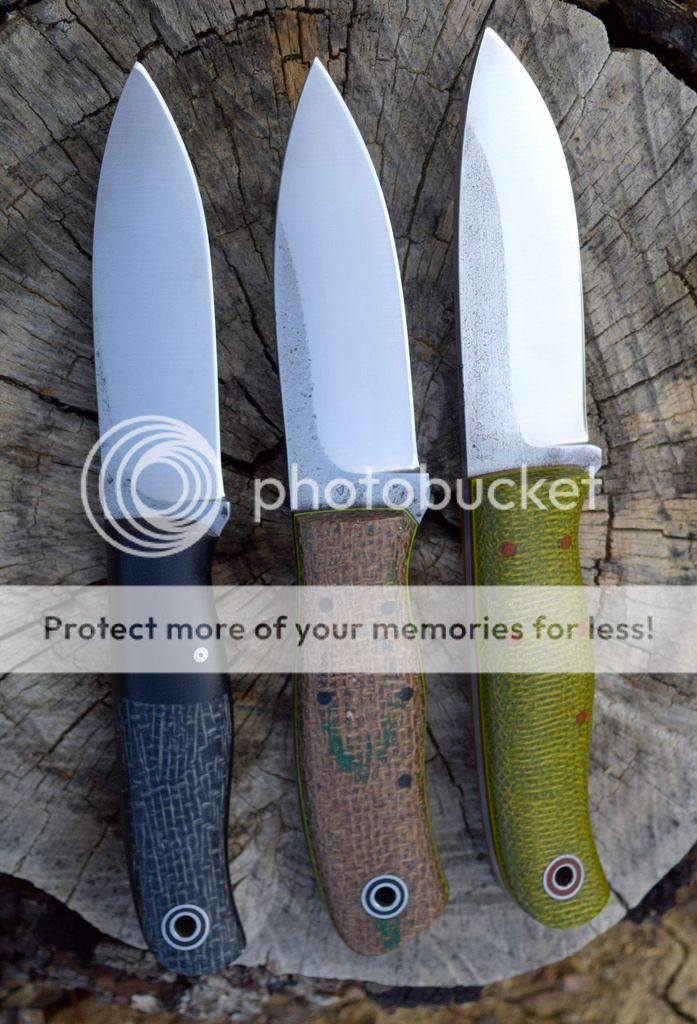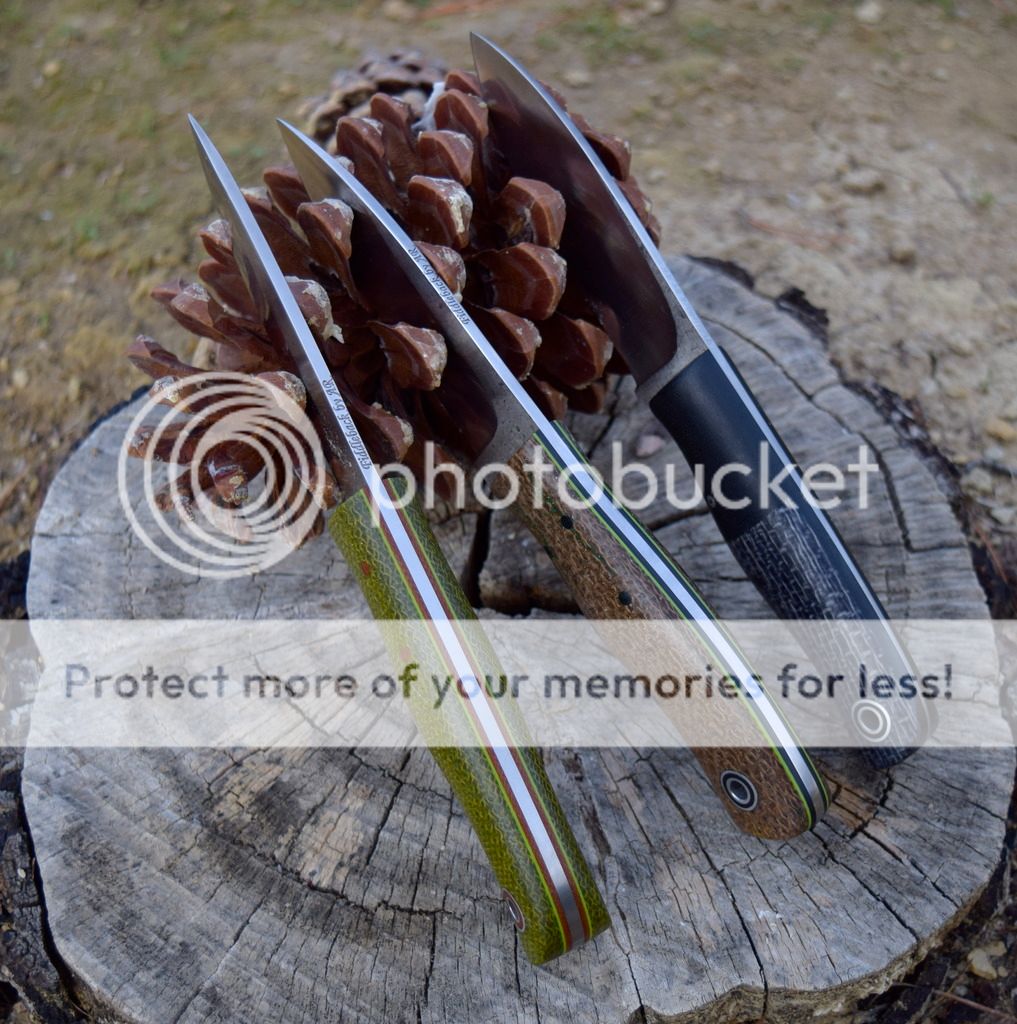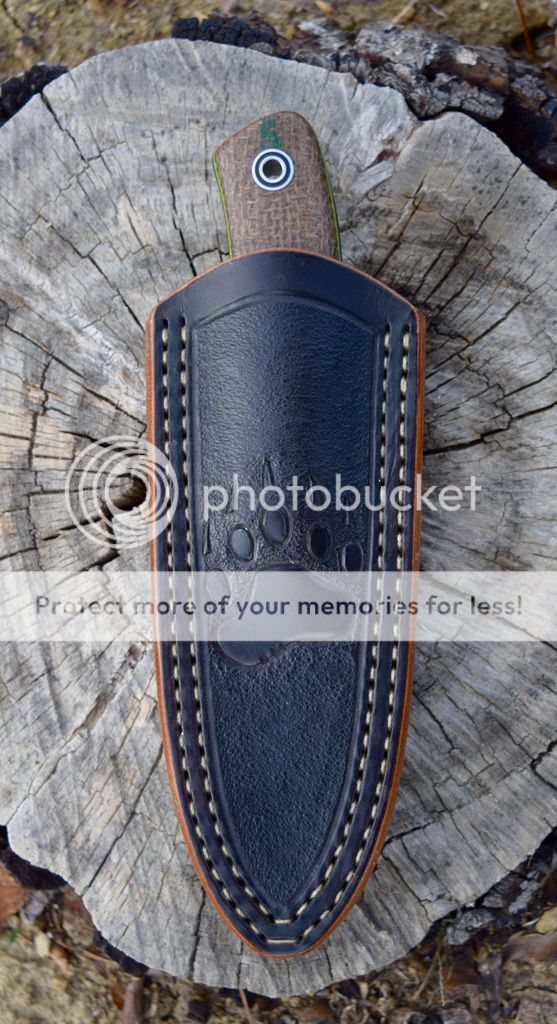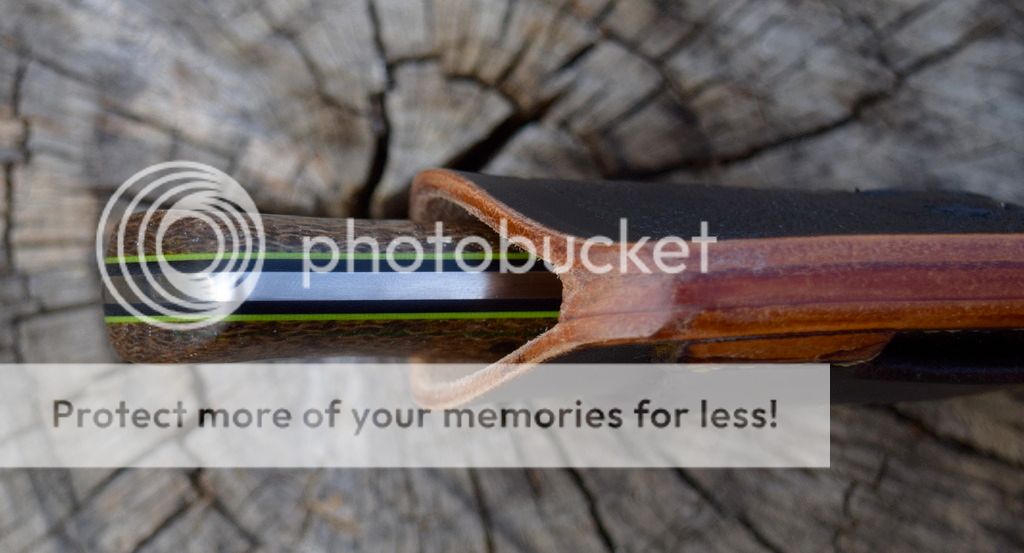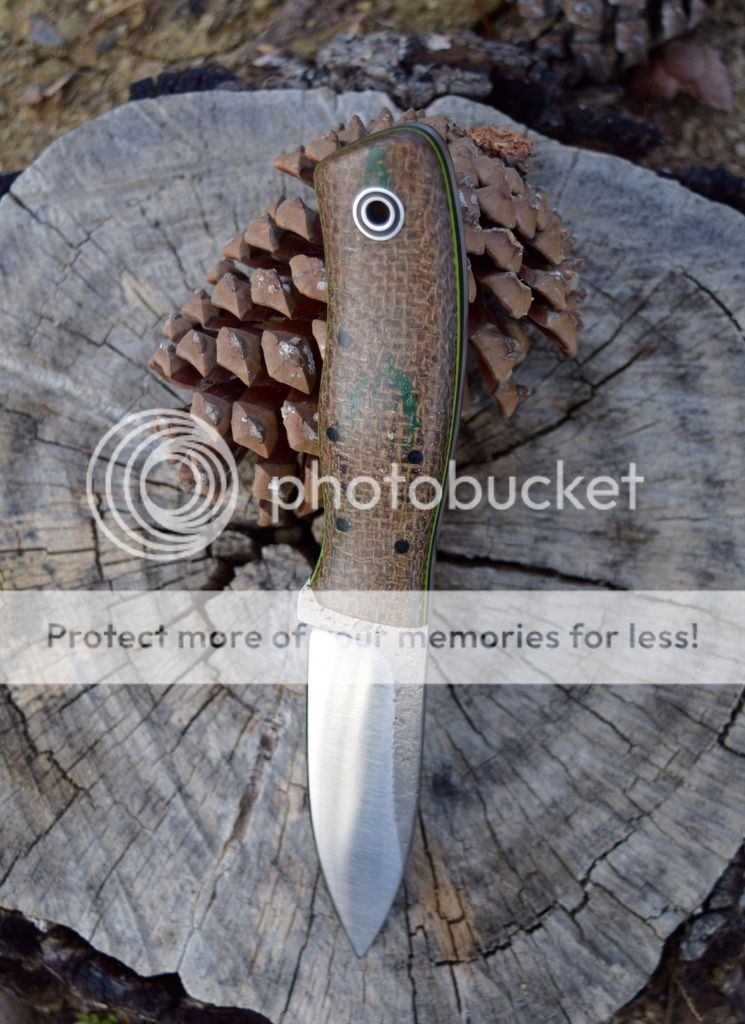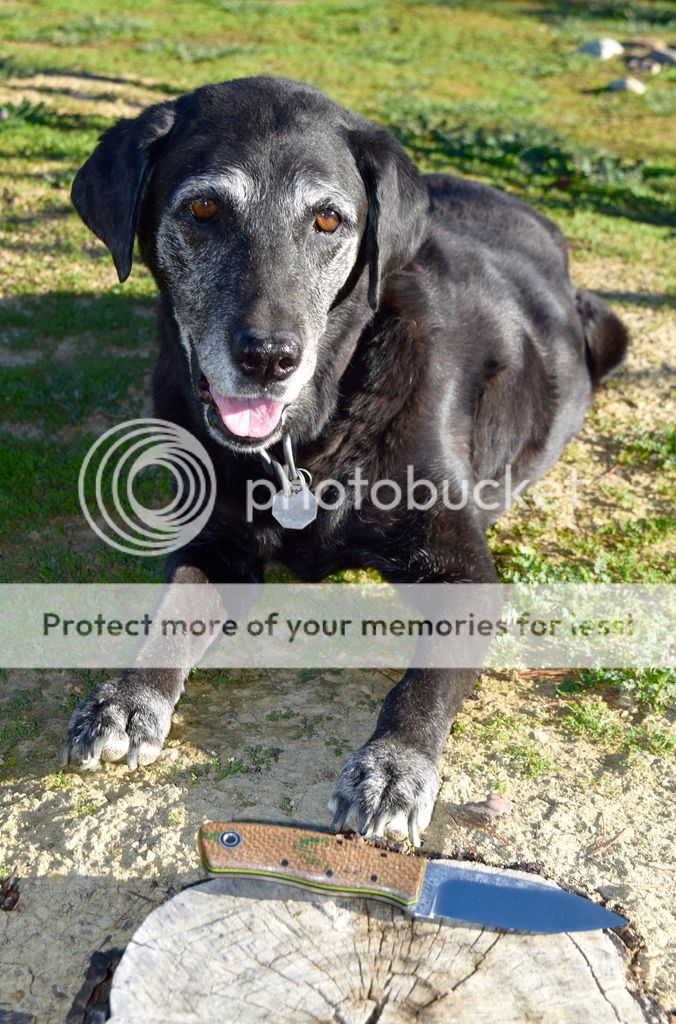Comprehensivist
Platinum Member
- Joined
- Aug 23, 2008
- Messages
- 3,295
Intro:
I have long wondered why the Sneaky Pete is not more popular than it is. Andy has said many times that he believes the Sneaky Pete has the most comfortable handle of any model he makes. When a gifted knife maker who is known for his amazingly comfortable handles makes that kind of statement, it should grab your attention.
I believe that there are a couple of reasons why potential buyers are somewhat confused by this model. First, the handle design is very unique compared to more traditional 4 handle designs represented by the Bushfinger, Recluse, Kephart, and Bushcrafter/Arete models in the Fiddleback line-up. It has a taller elliptical shape, particularly on the back end. , the unique handle design combined with a spear point blade makes it difficult to classify what role it is supposed to fill. Is it intended to be a last ditch self-defense weapon or an outdoors/camping/bushcrafting tool? I suspect that Andy may have been straddling the fence when he designed this model. The reason I say this is because my research indicates that this model was first offered for sale on 05/10/13 as the Bushcraft Dagger. That name clearly hints at a dual role. The model name was changed to Sneaky Pete after that first offering. This model went through one design change in July 2014 to add a large chamfer to the pommel end of the handle in place of the original sharp corner. I will comment more about this design change a little later into the review.
My personal Sneaky Pete was from the 11/01/13 FF batch. At that time, it was only my 2nd Fiddleback Friday purchase and my 1st knife with Shadetree burlap. This knife started a Shadetree theme to my collection that still applies today for the most part. Something about the design of the knife struck a chord with me. Even so, I stared at the photo below many times over a day-and-a-half before I pulled the trigger on it. Those were still the days when competition wasnt as fierce as it is now and you had more time to think things through.

Specs:
FF Lot Info: 2013 1101 018
OAL: 8.498"
Blade Length: 3.980"
Handle Length: 4.518"
Steel & Thickness: .124" O-1 Tool Steel (Note: Originally advertised as 5/32)
Tang Type: SFT (skeletonized full tang)
Grind: Convex
Handle Material: Coffeebag Burlap from Shadetree over black g10 with a lime green g10 pinstripe
Weight (oz.): 6.1 ounces
Blade Height @ Ricasso: 1.200"
Handle Width @ Palmswell: .775"
Handle Height @ Palmswell: .1.250"
Circumference @ Palmswell: 3.668
Distance Front of Handle to Palmswell: 1.970
Balance Point: .375 Behind Front Pins

I have long wondered why the Sneaky Pete is not more popular than it is. Andy has said many times that he believes the Sneaky Pete has the most comfortable handle of any model he makes. When a gifted knife maker who is known for his amazingly comfortable handles makes that kind of statement, it should grab your attention.
I believe that there are a couple of reasons why potential buyers are somewhat confused by this model. First, the handle design is very unique compared to more traditional 4 handle designs represented by the Bushfinger, Recluse, Kephart, and Bushcrafter/Arete models in the Fiddleback line-up. It has a taller elliptical shape, particularly on the back end. , the unique handle design combined with a spear point blade makes it difficult to classify what role it is supposed to fill. Is it intended to be a last ditch self-defense weapon or an outdoors/camping/bushcrafting tool? I suspect that Andy may have been straddling the fence when he designed this model. The reason I say this is because my research indicates that this model was first offered for sale on 05/10/13 as the Bushcraft Dagger. That name clearly hints at a dual role. The model name was changed to Sneaky Pete after that first offering. This model went through one design change in July 2014 to add a large chamfer to the pommel end of the handle in place of the original sharp corner. I will comment more about this design change a little later into the review.
My personal Sneaky Pete was from the 11/01/13 FF batch. At that time, it was only my 2nd Fiddleback Friday purchase and my 1st knife with Shadetree burlap. This knife started a Shadetree theme to my collection that still applies today for the most part. Something about the design of the knife struck a chord with me. Even so, I stared at the photo below many times over a day-and-a-half before I pulled the trigger on it. Those were still the days when competition wasnt as fierce as it is now and you had more time to think things through.

Specs:
FF Lot Info: 2013 1101 018
OAL: 8.498"
Blade Length: 3.980"
Handle Length: 4.518"
Steel & Thickness: .124" O-1 Tool Steel (Note: Originally advertised as 5/32)
Tang Type: SFT (skeletonized full tang)
Grind: Convex
Handle Material: Coffeebag Burlap from Shadetree over black g10 with a lime green g10 pinstripe
Weight (oz.): 6.1 ounces
Blade Height @ Ricasso: 1.200"
Handle Width @ Palmswell: .775"
Handle Height @ Palmswell: .1.250"
Circumference @ Palmswell: 3.668
Distance Front of Handle to Palmswell: 1.970
Balance Point: .375 Behind Front Pins

Last edited:

